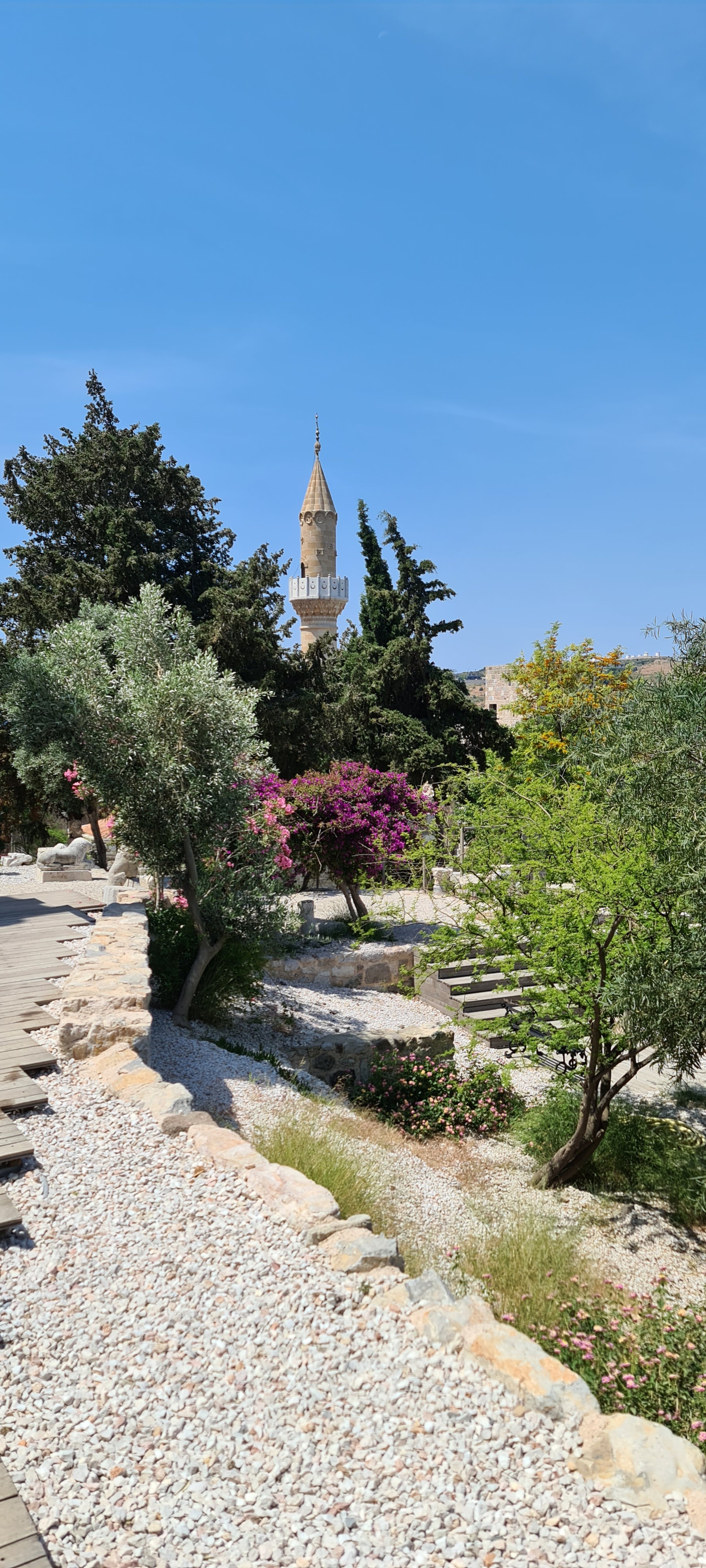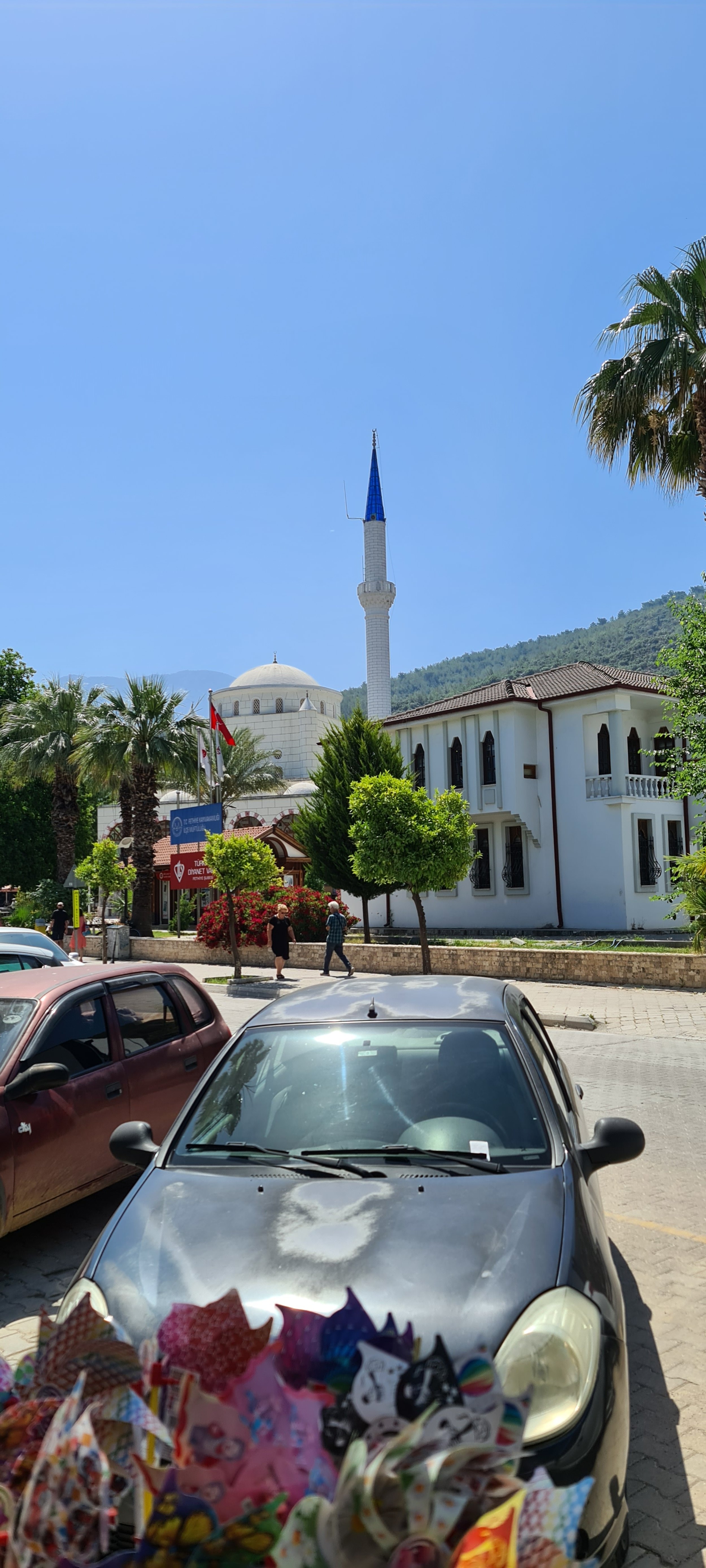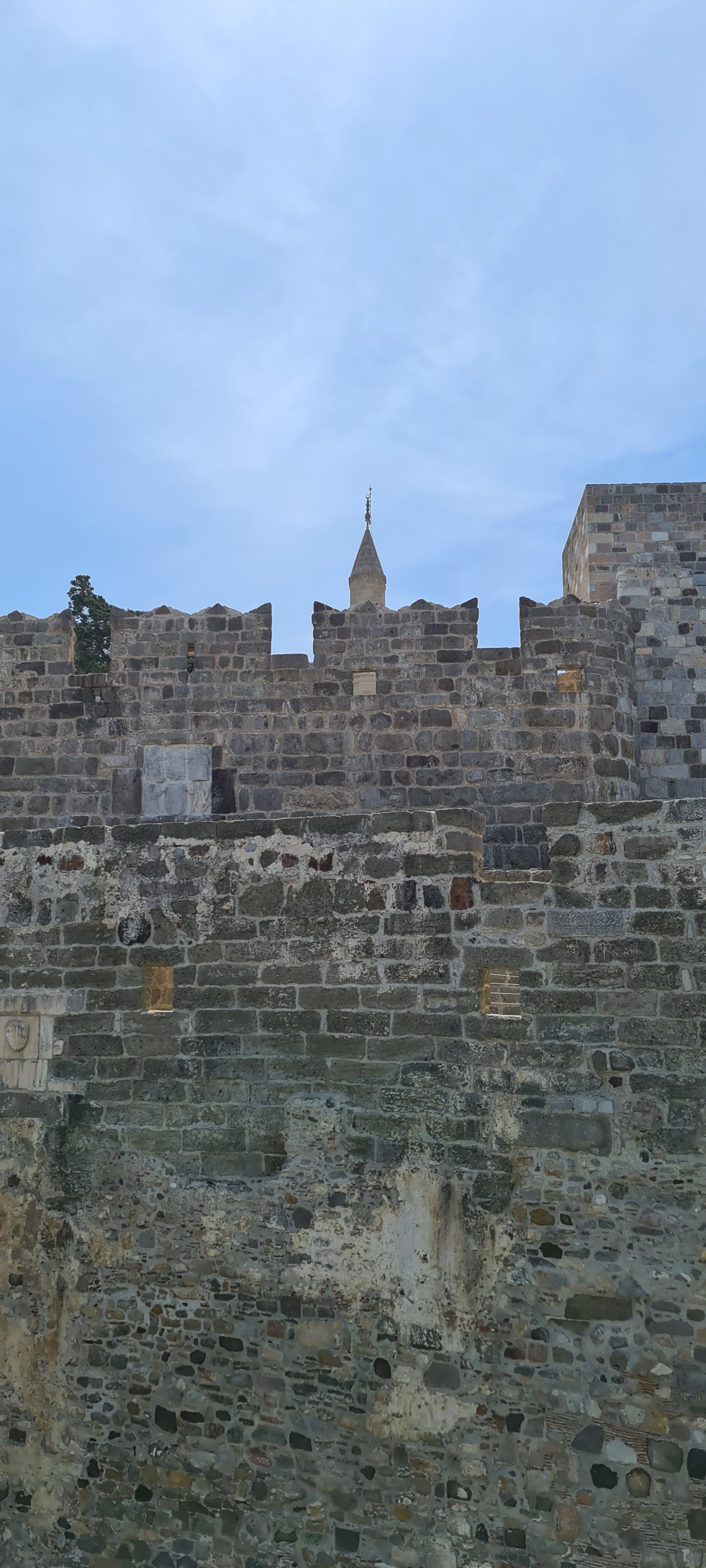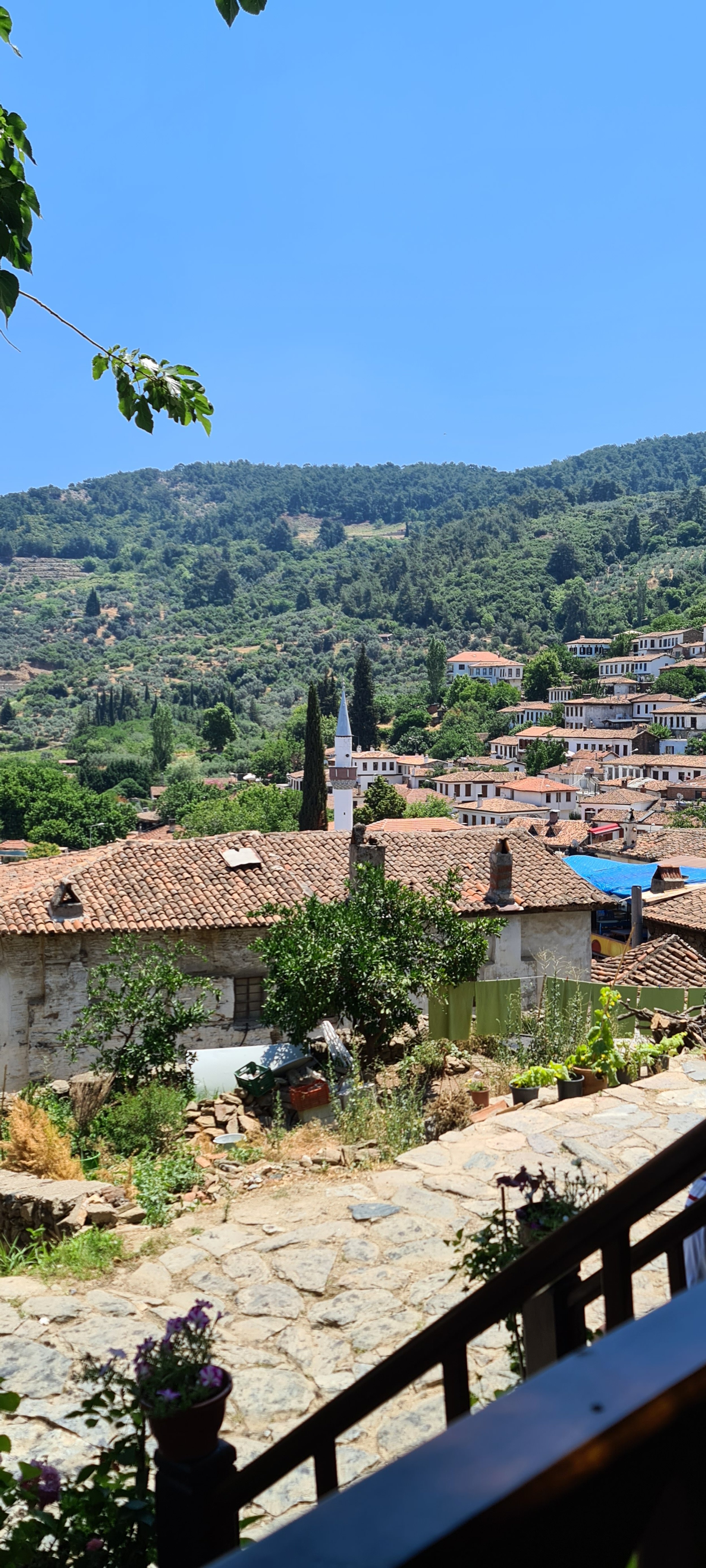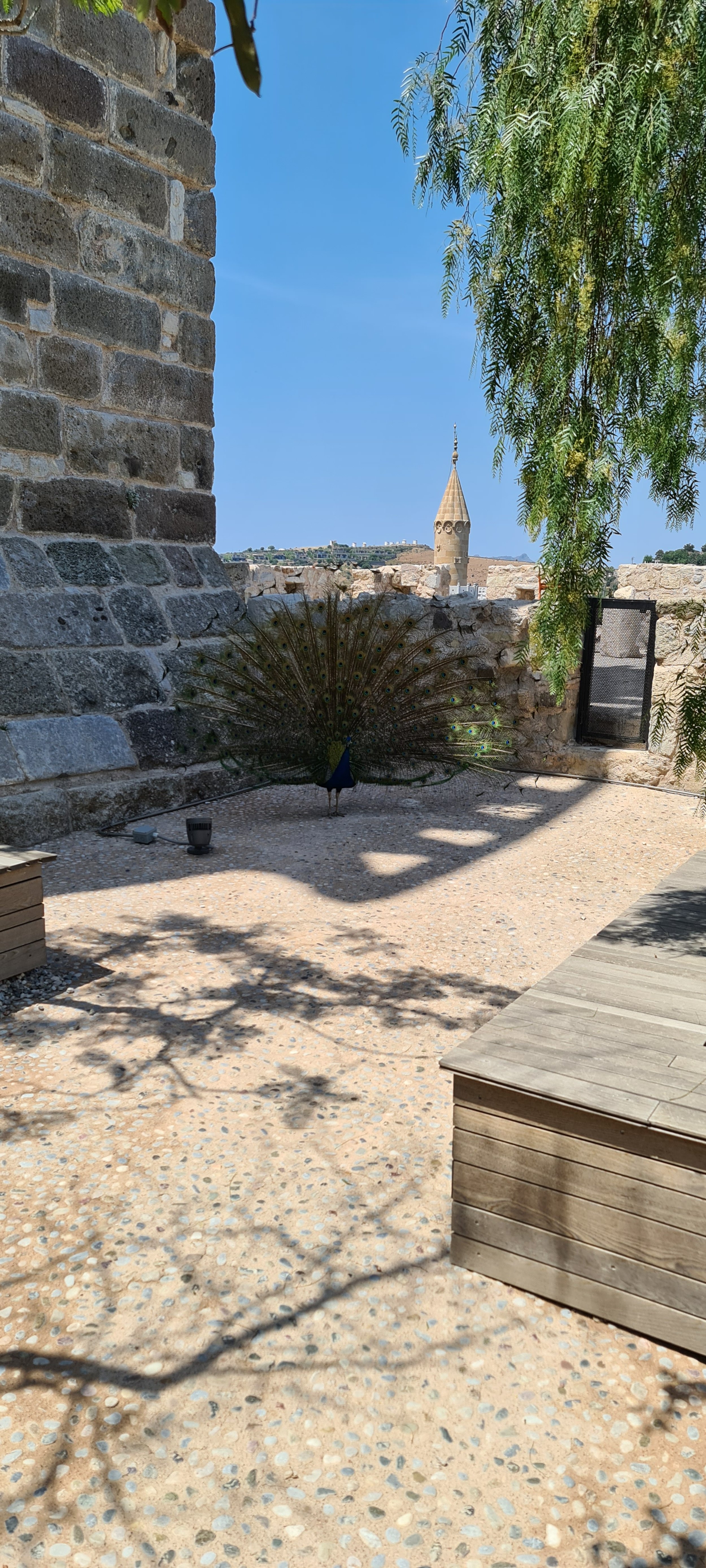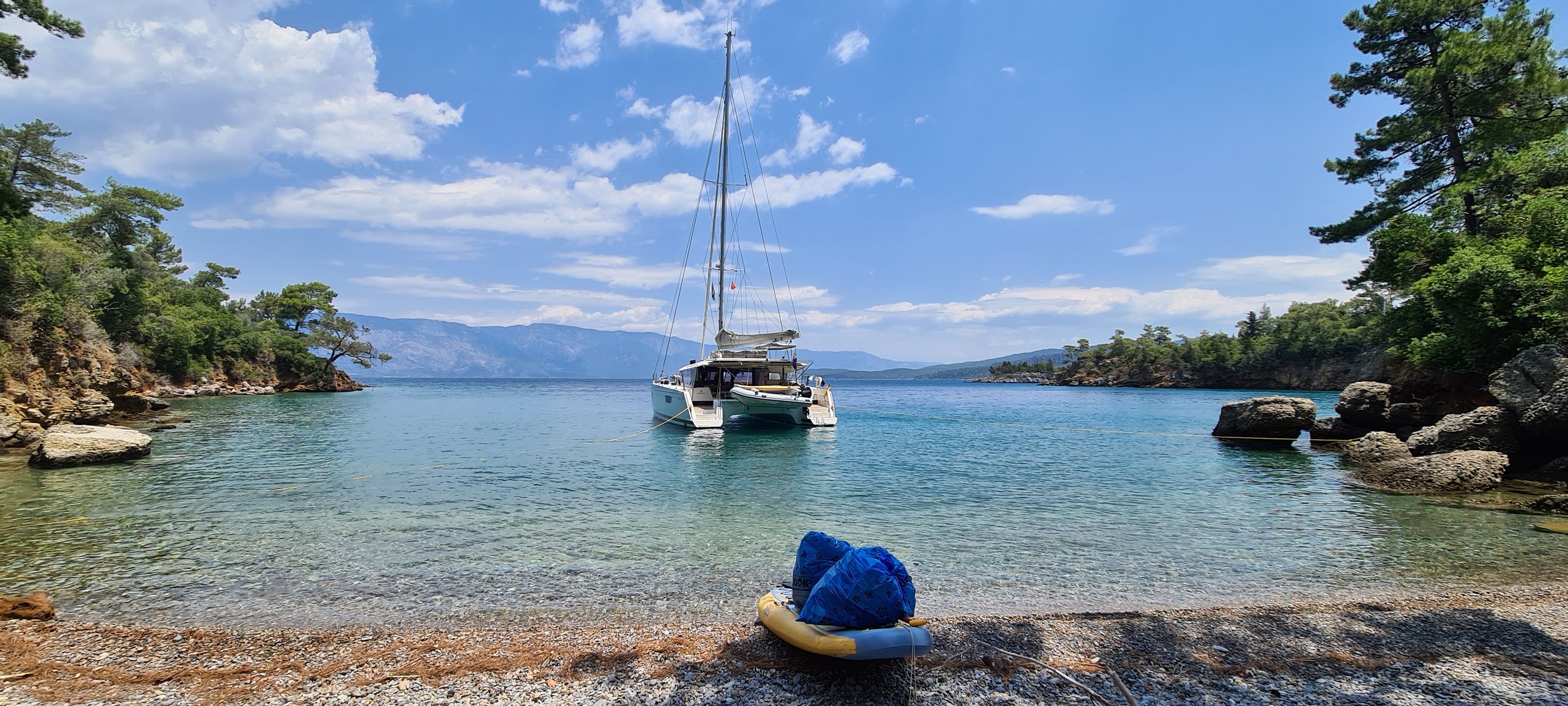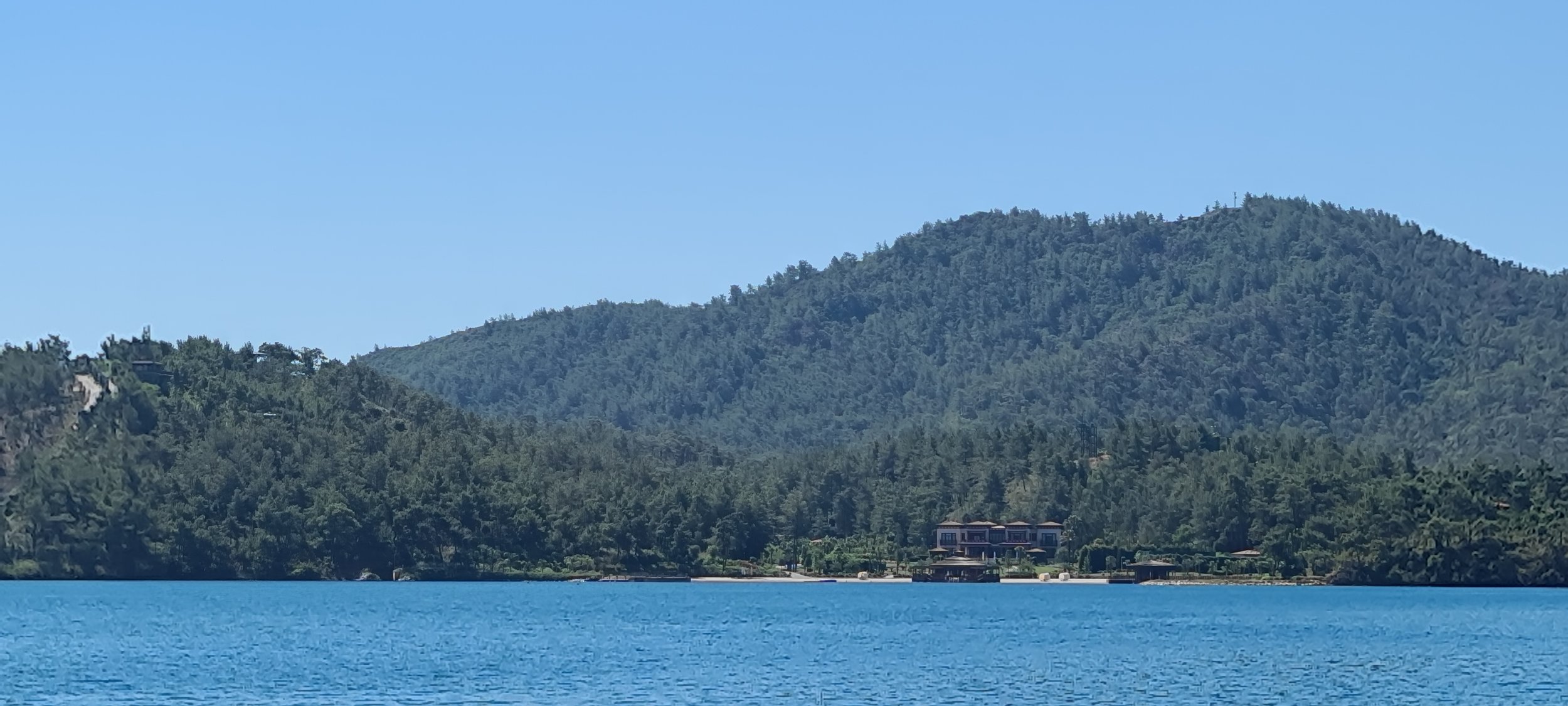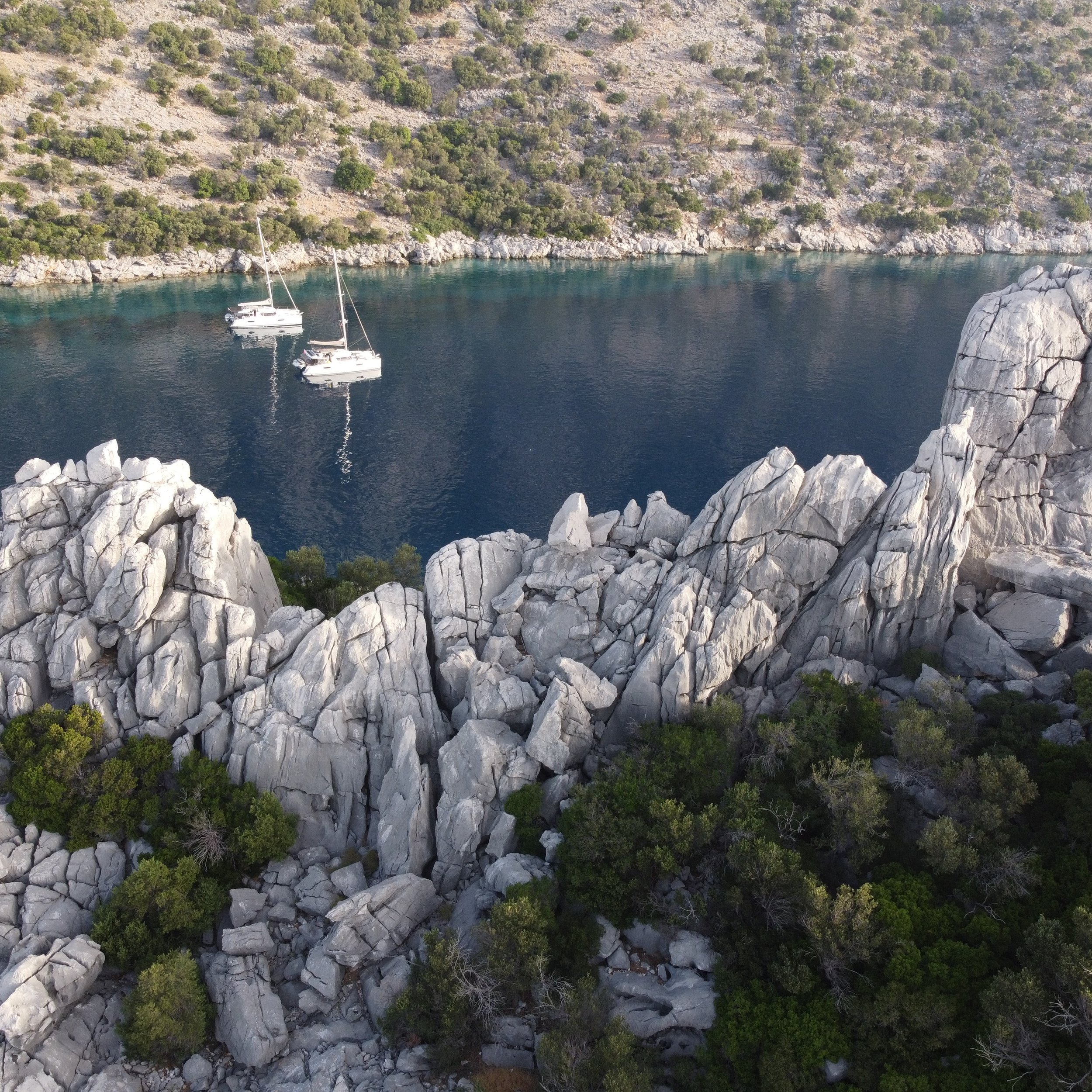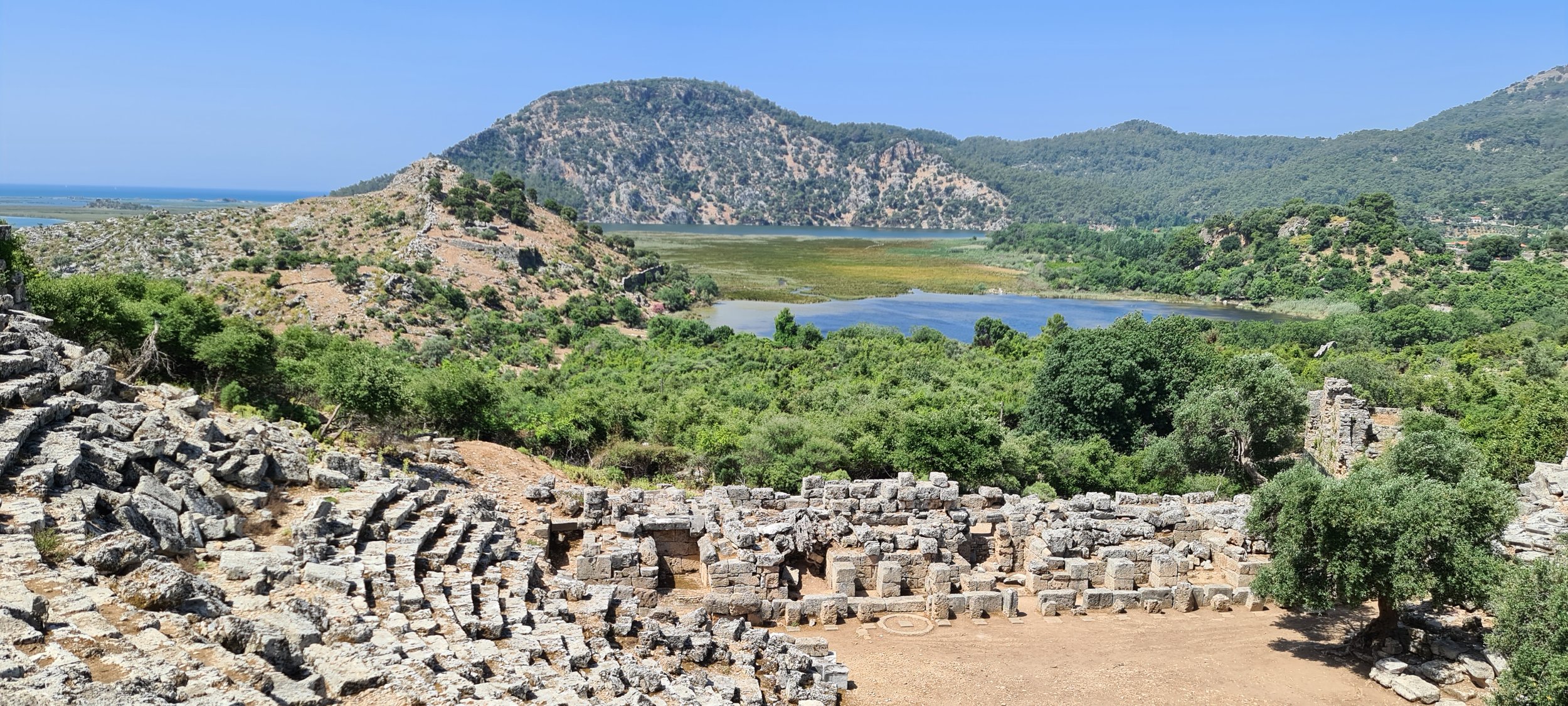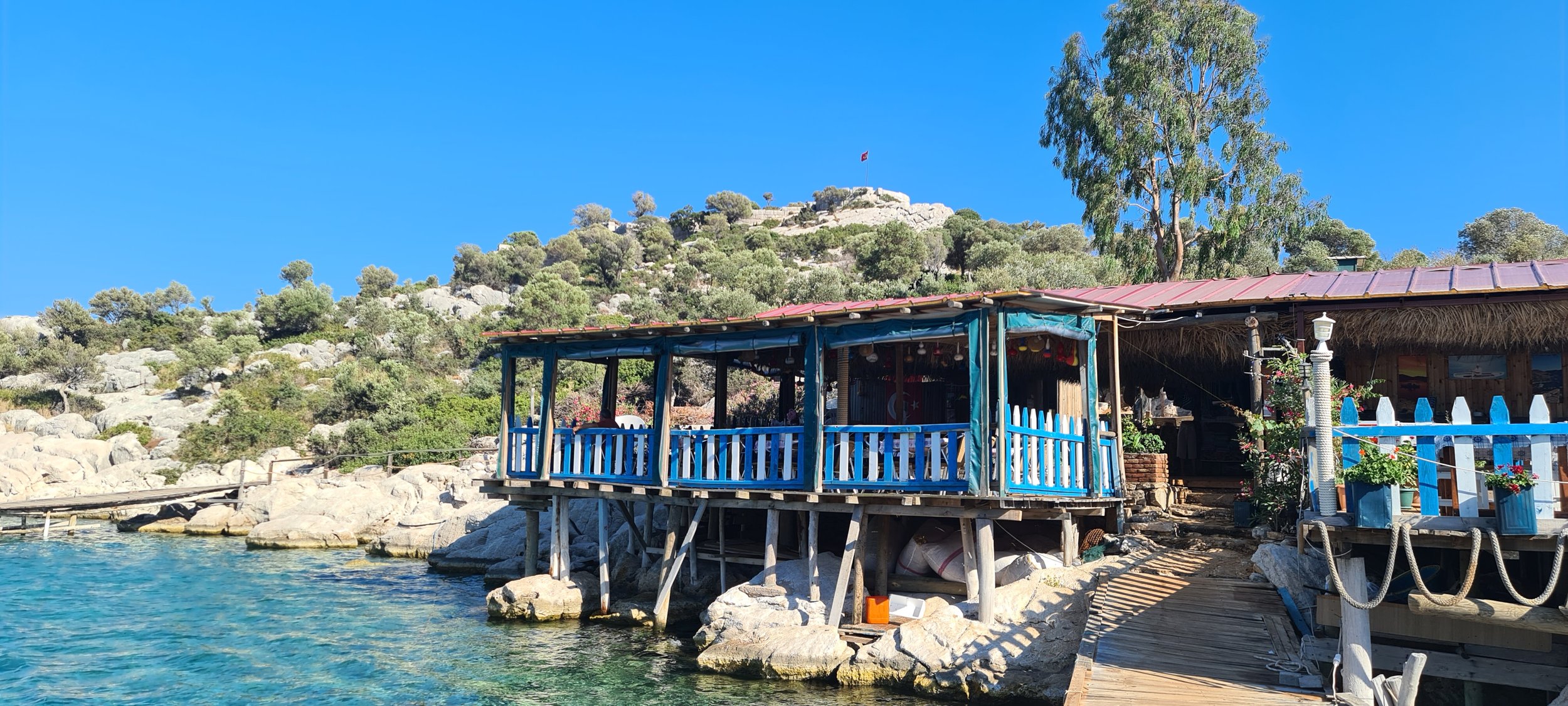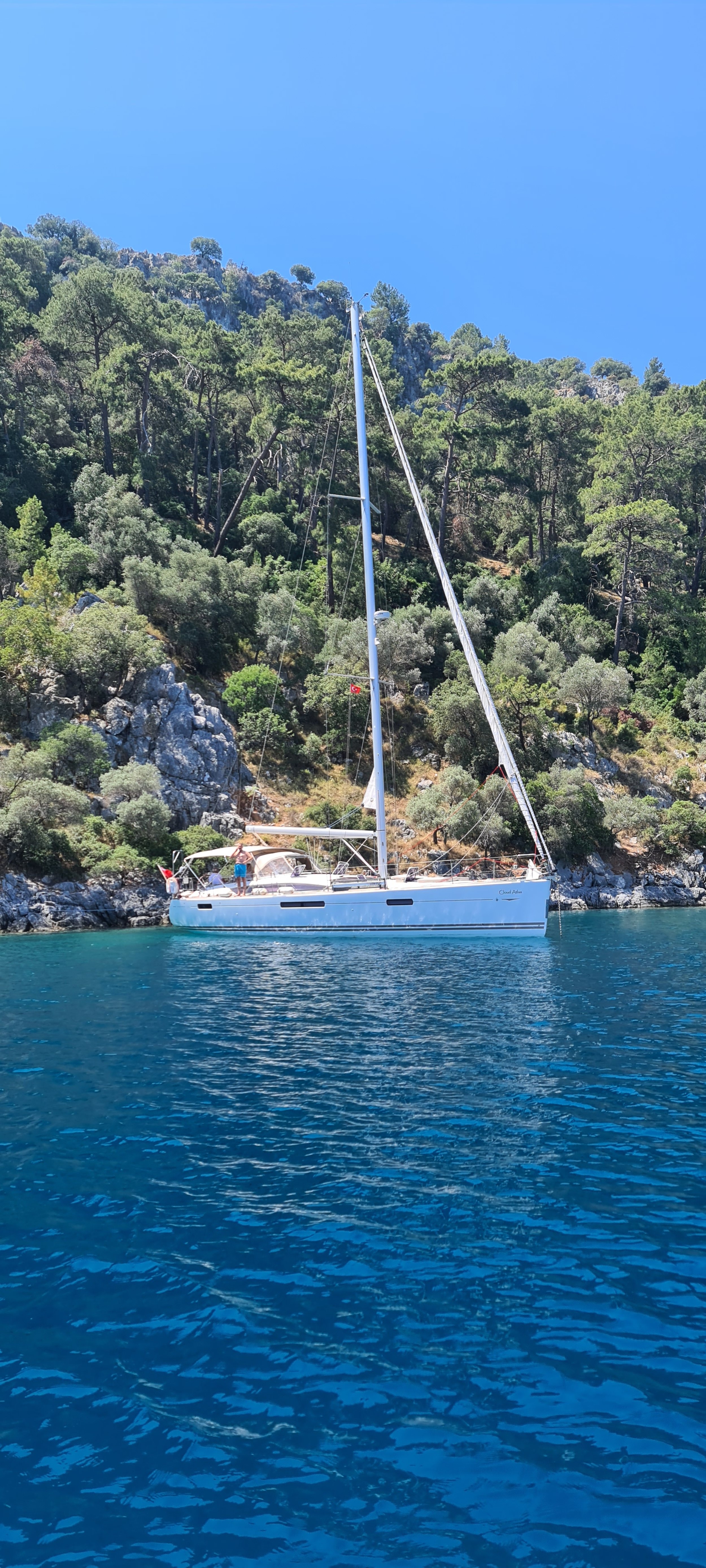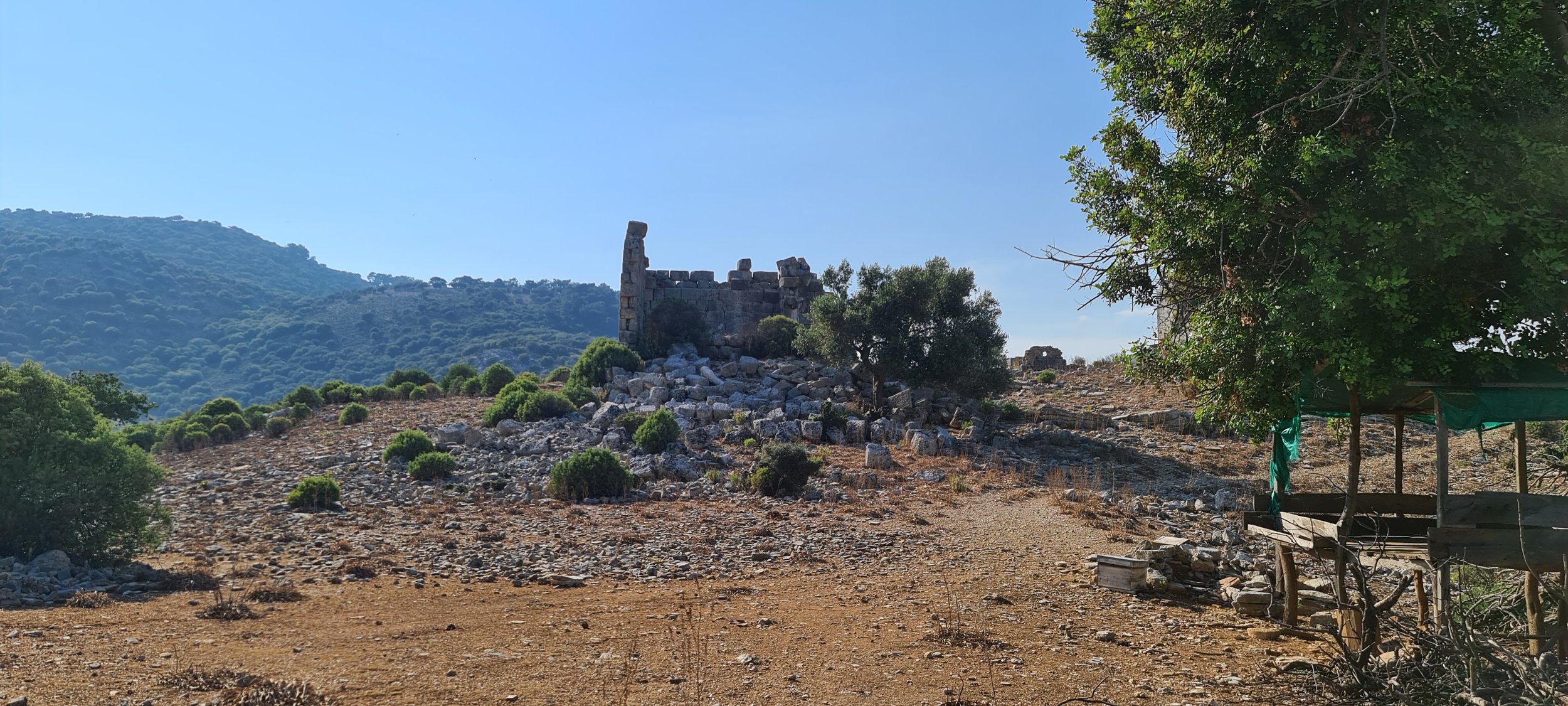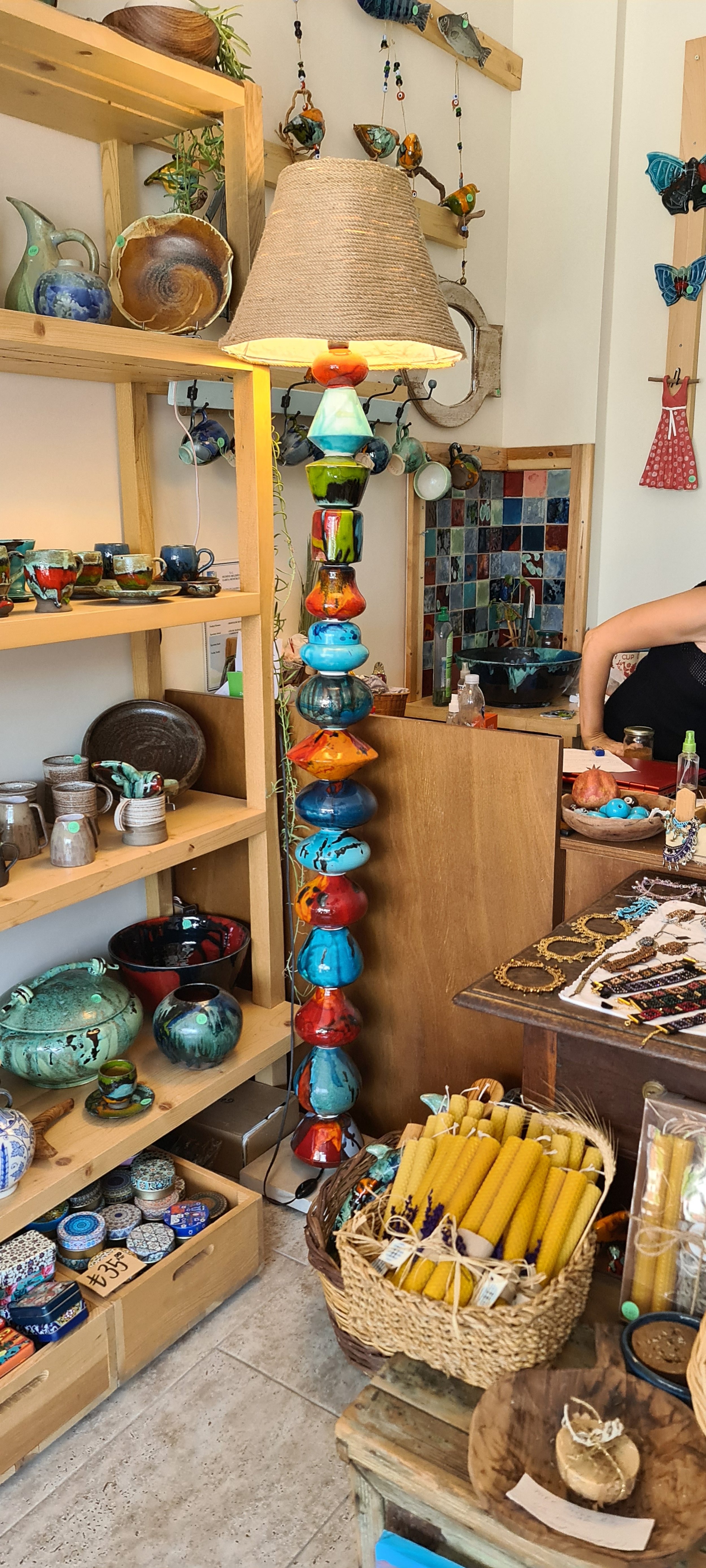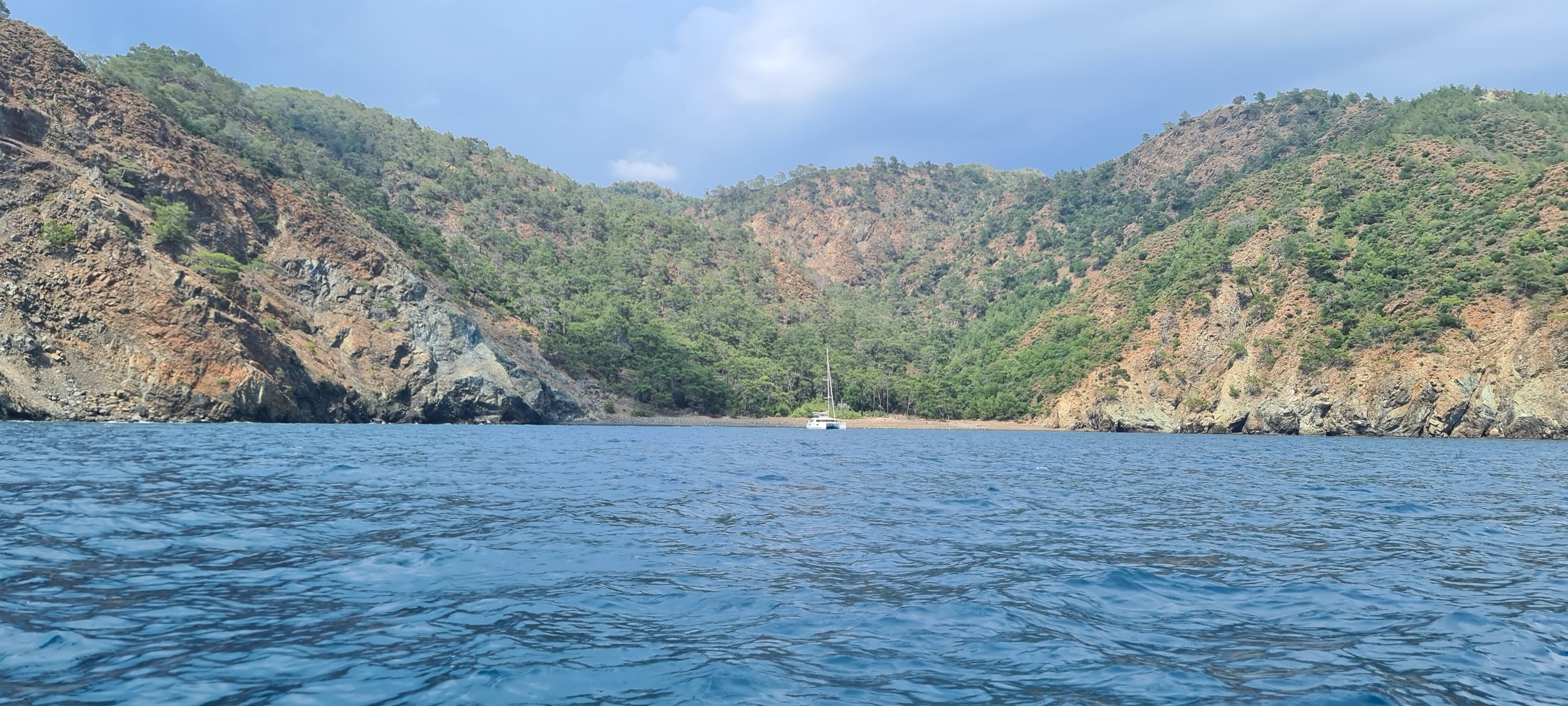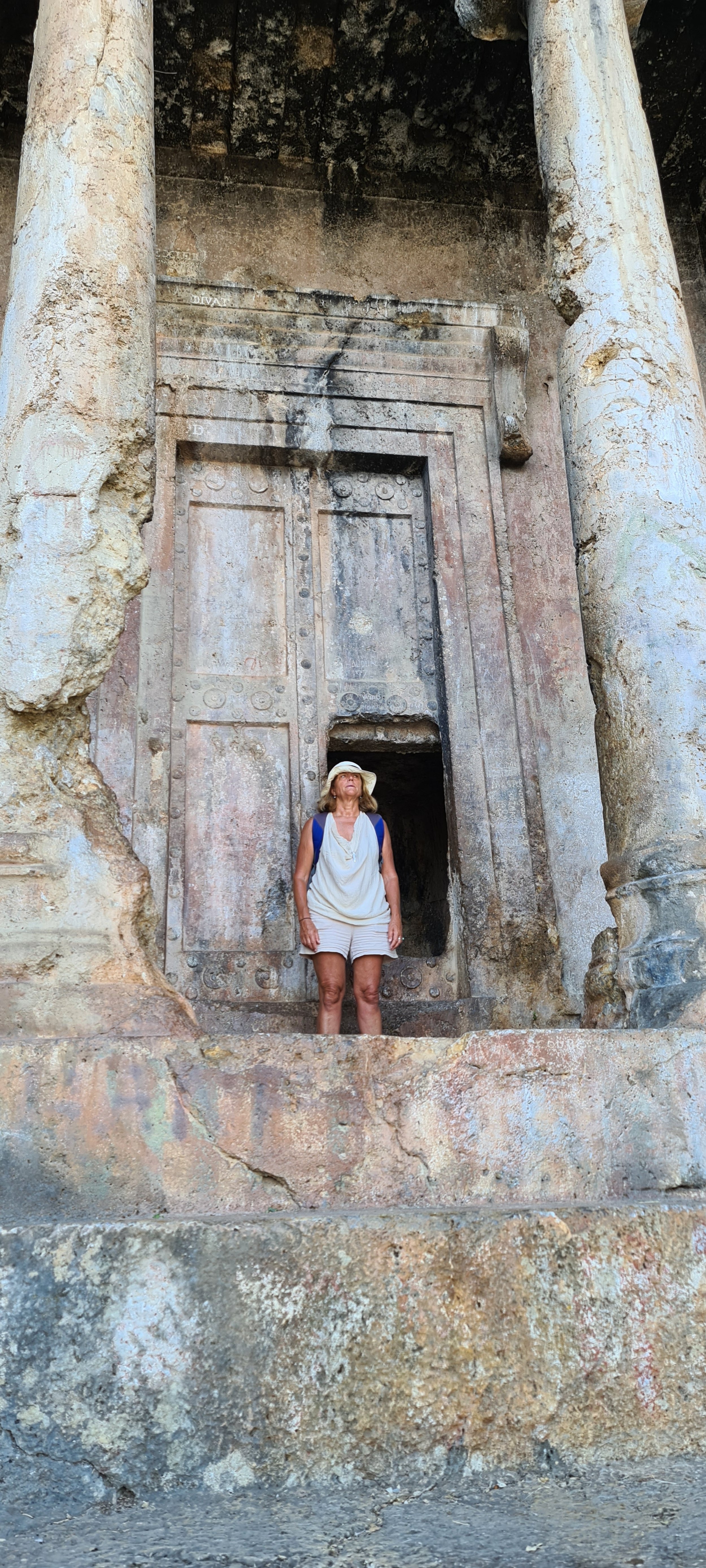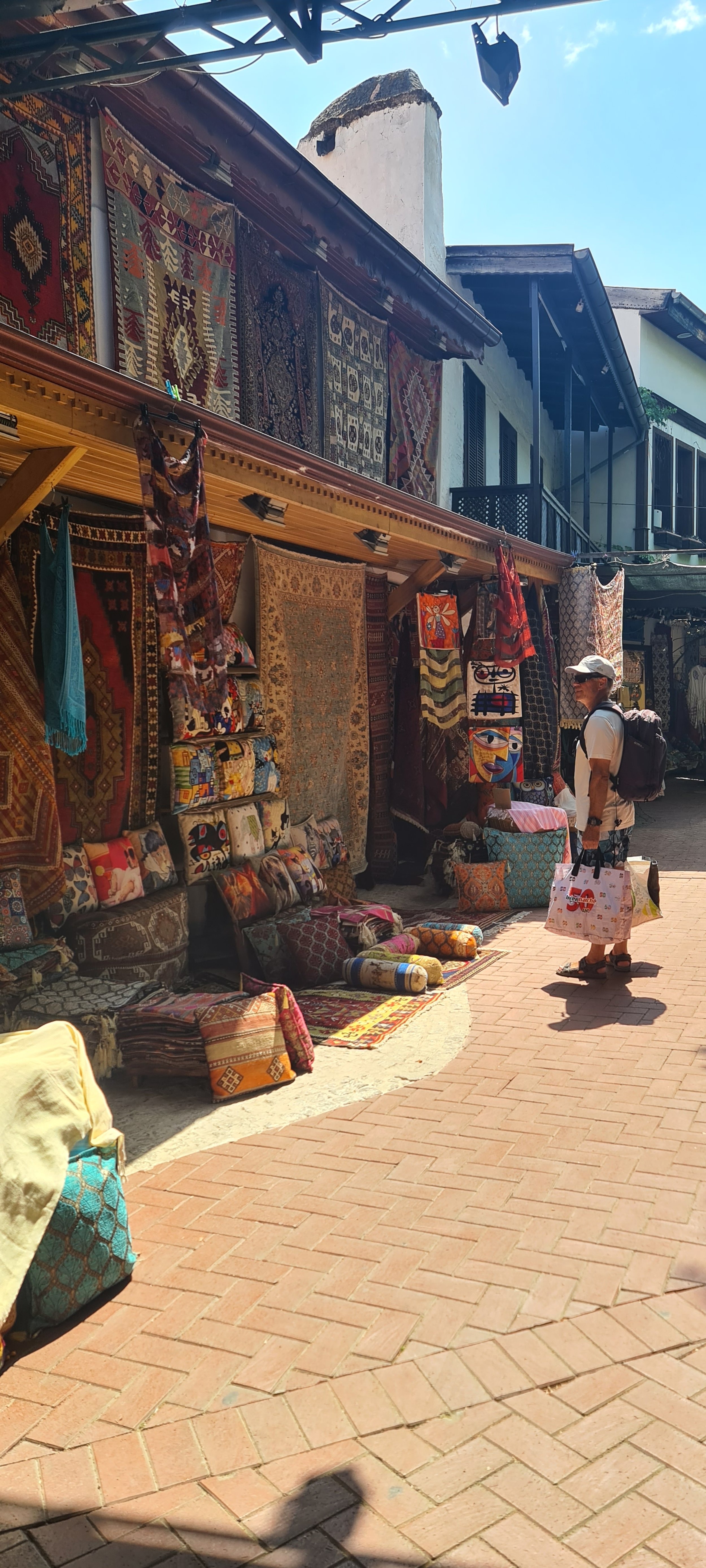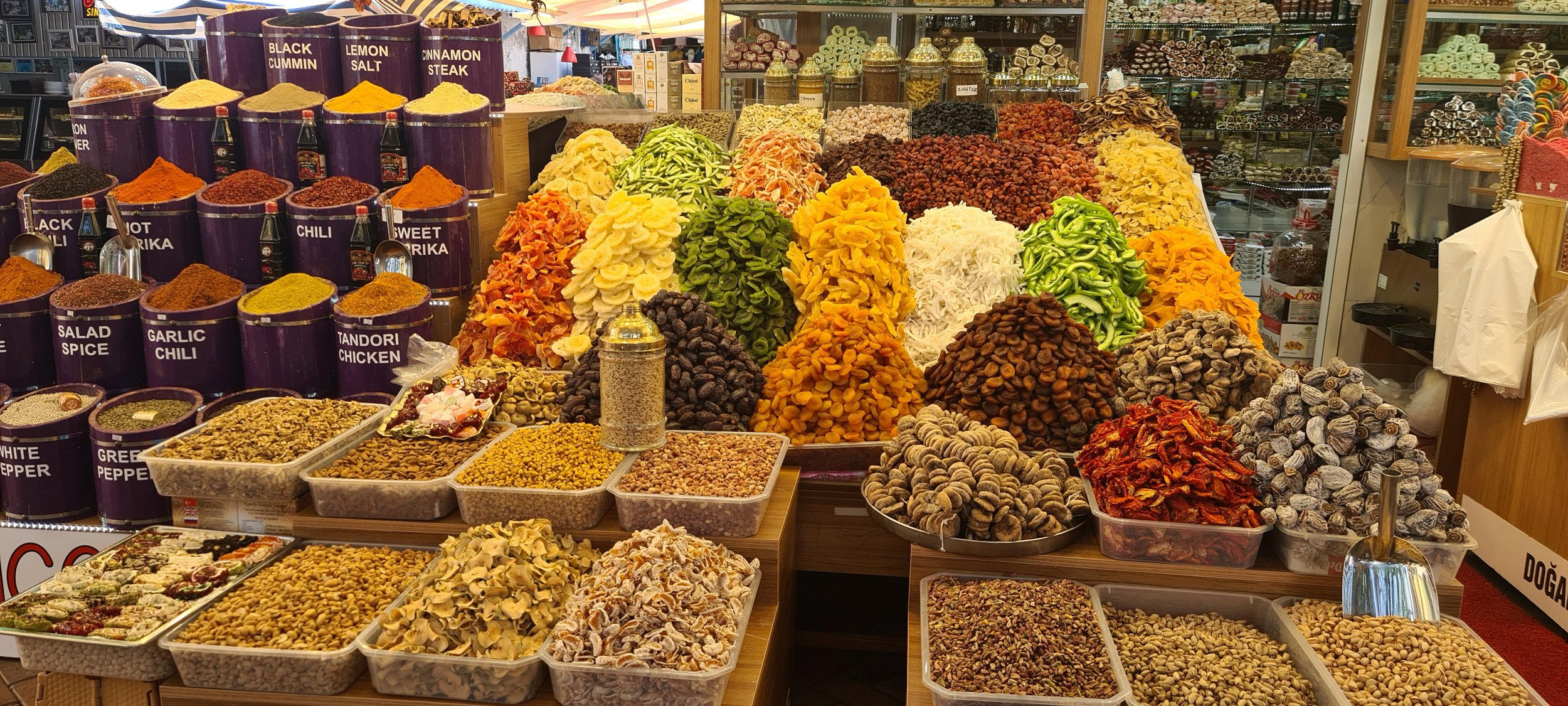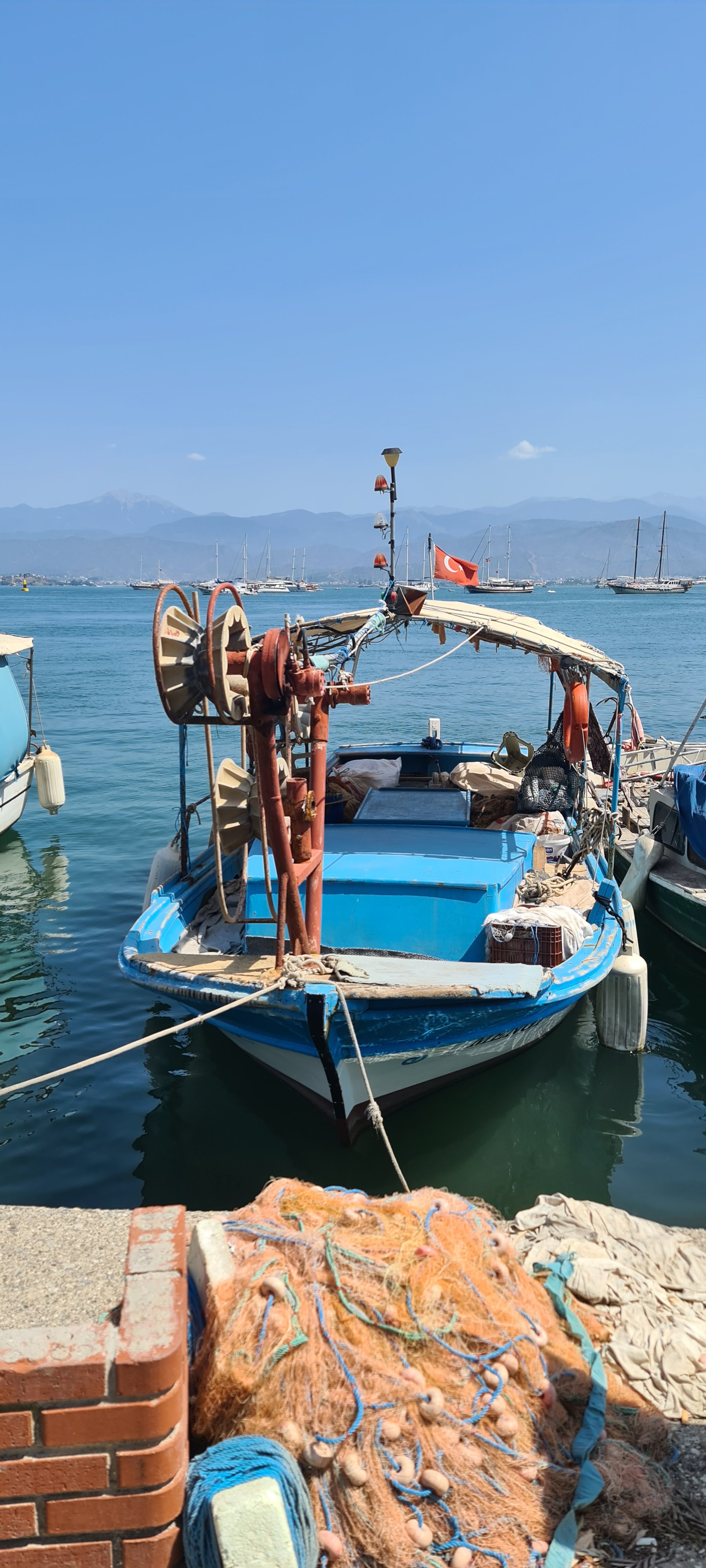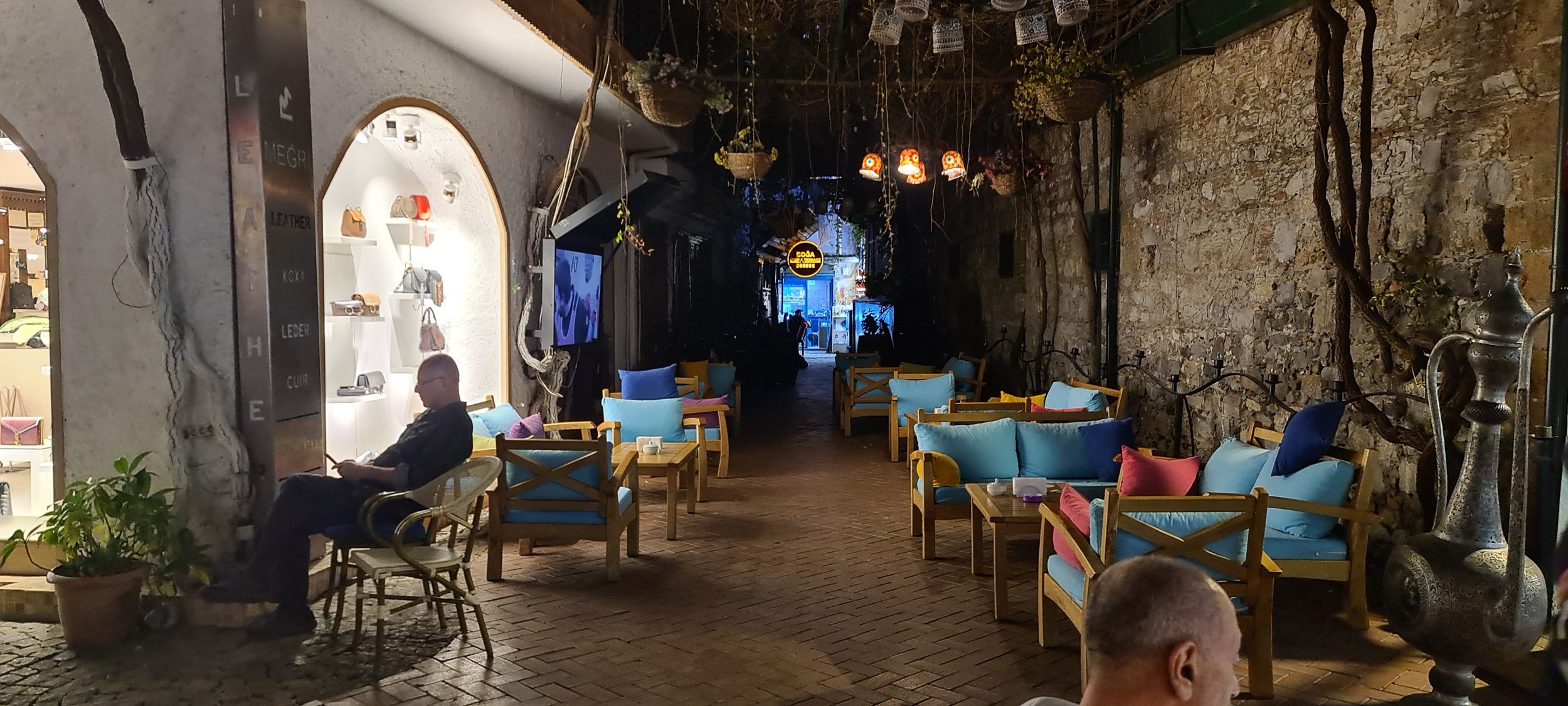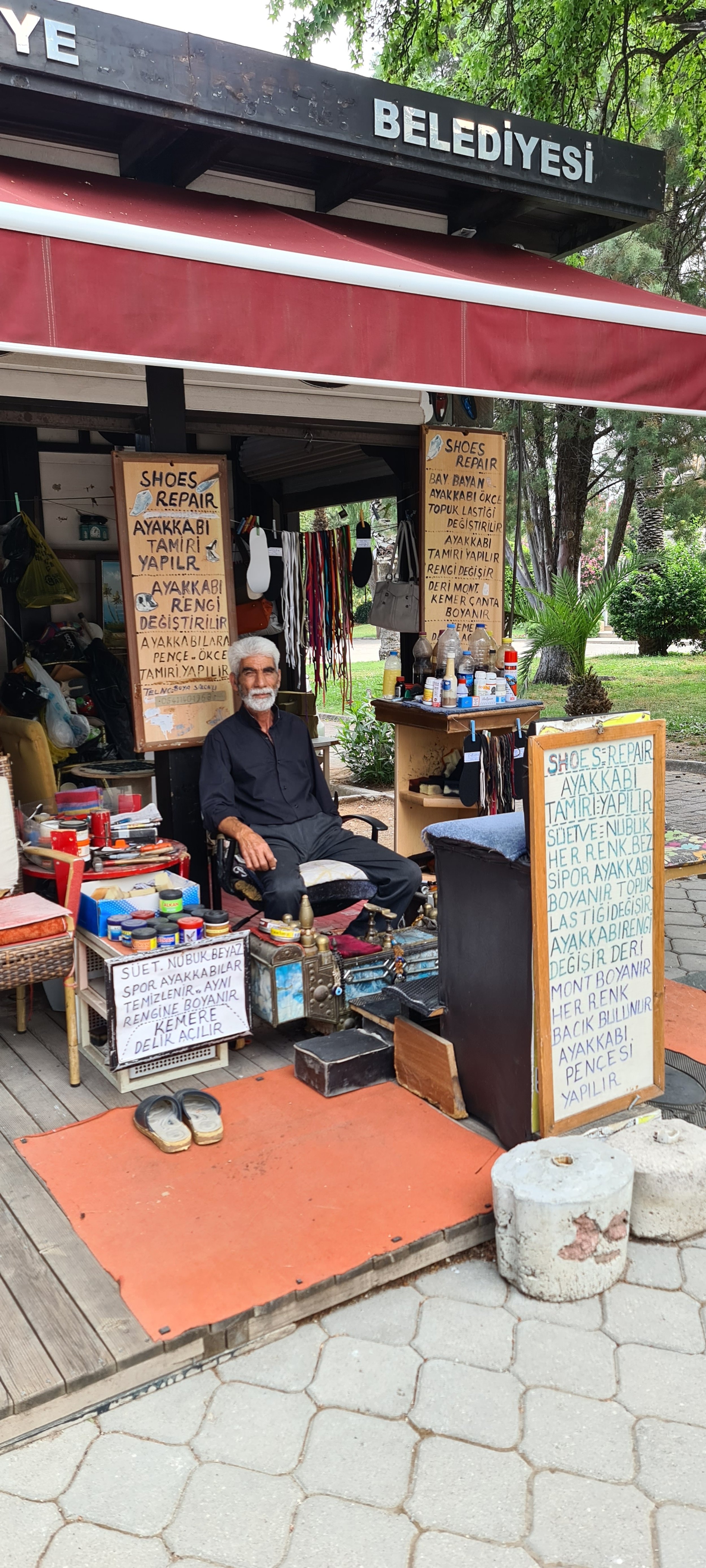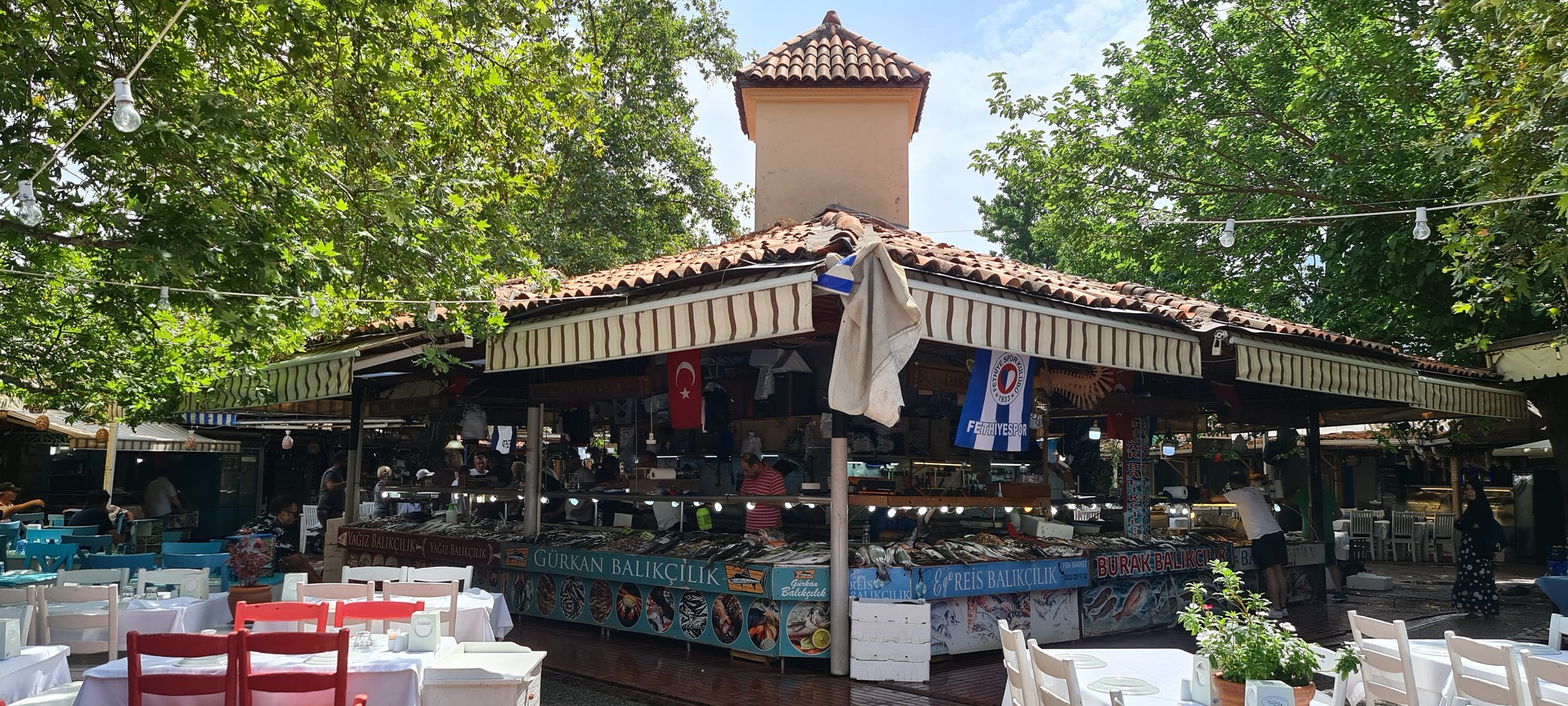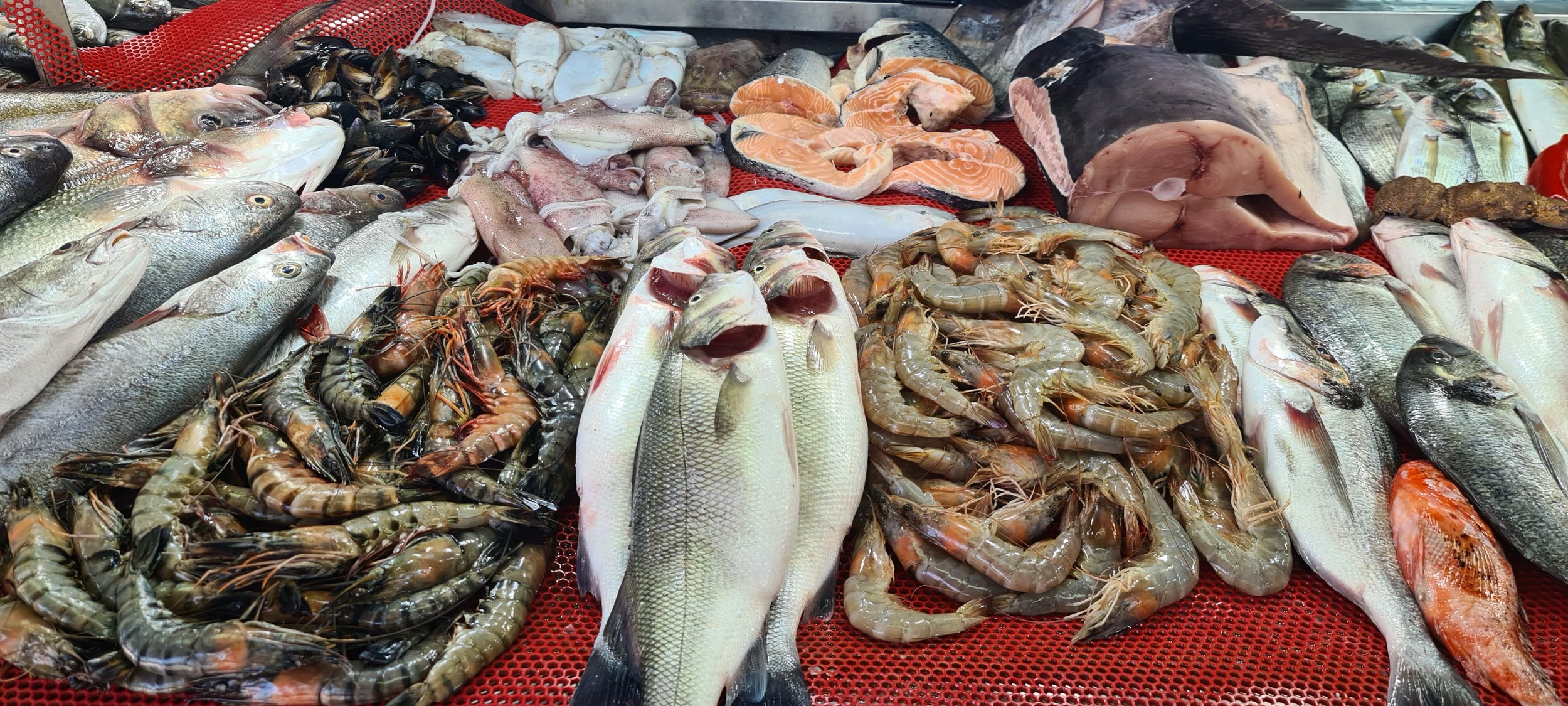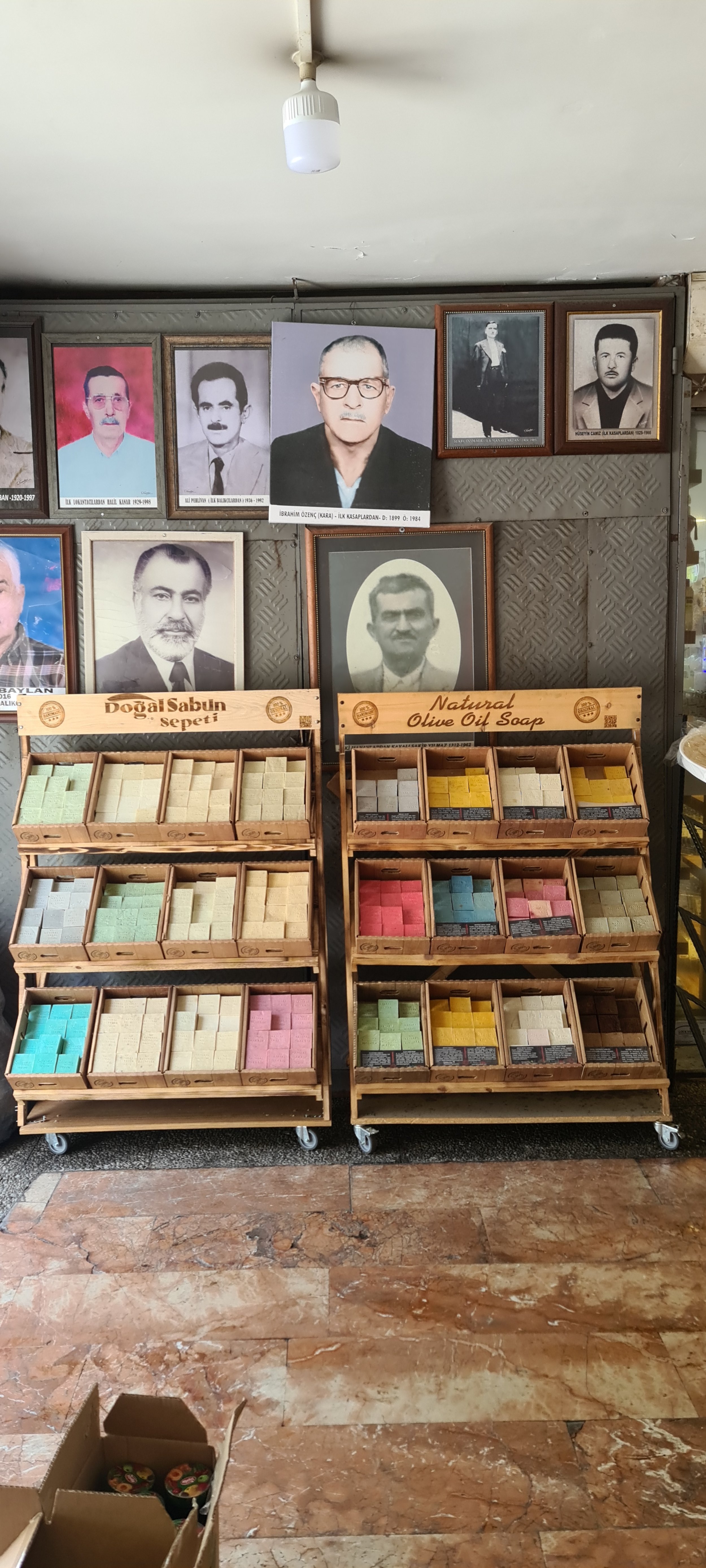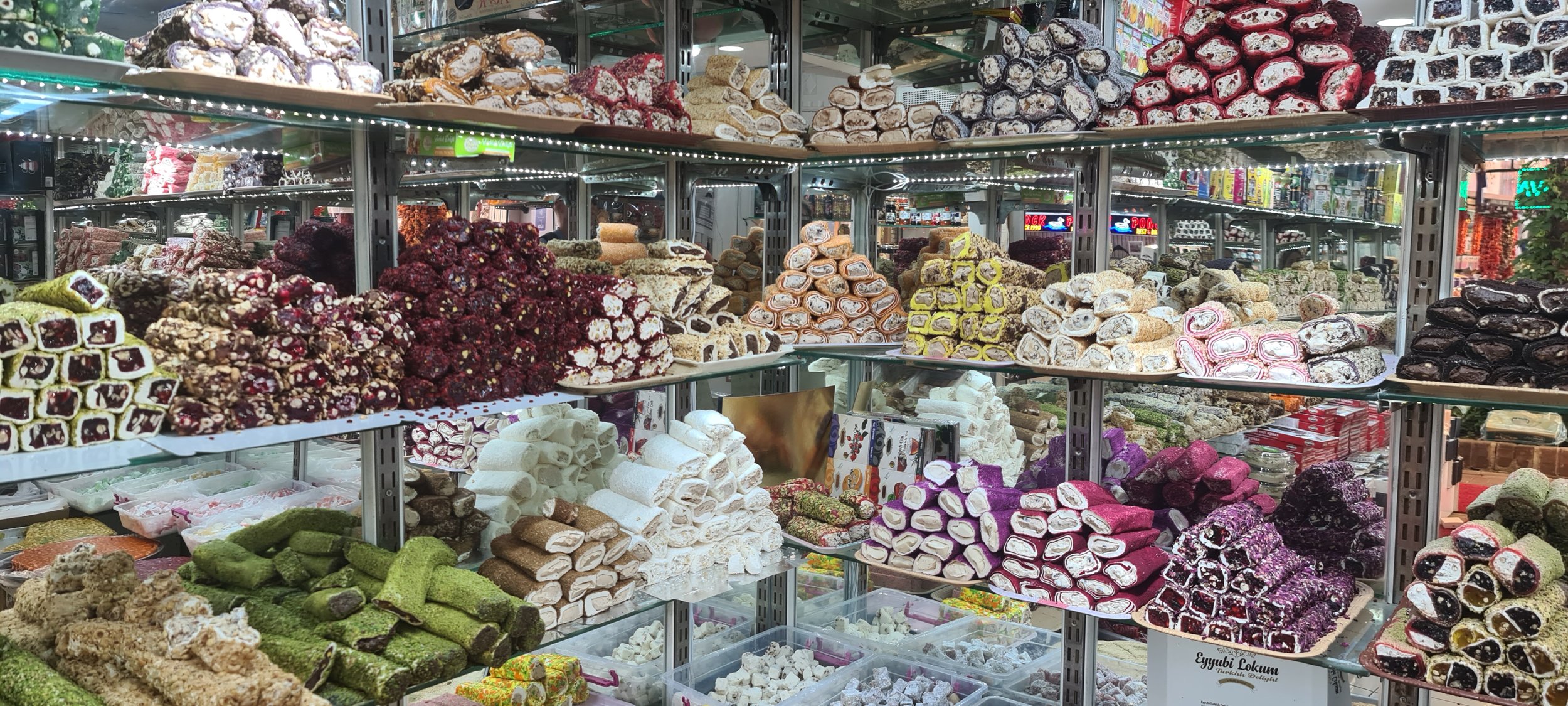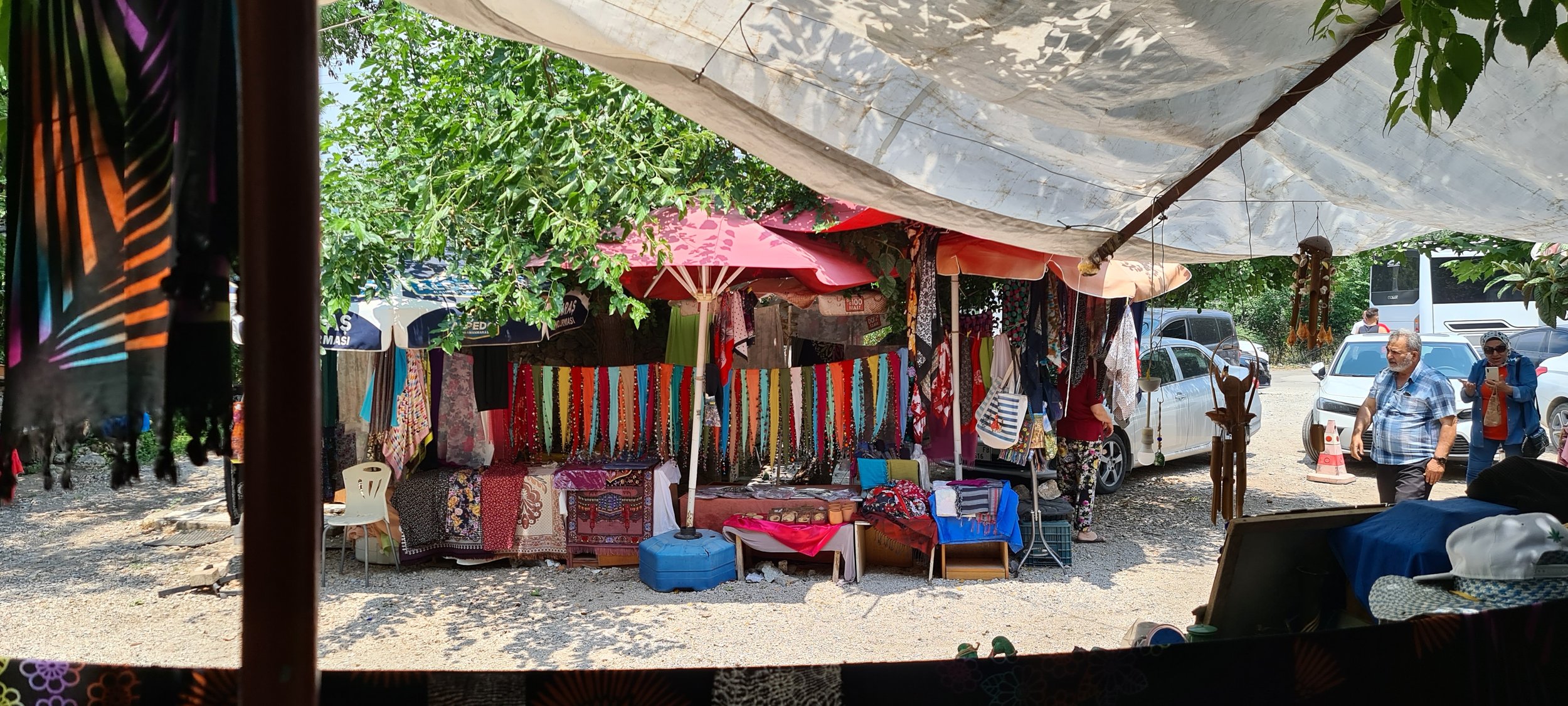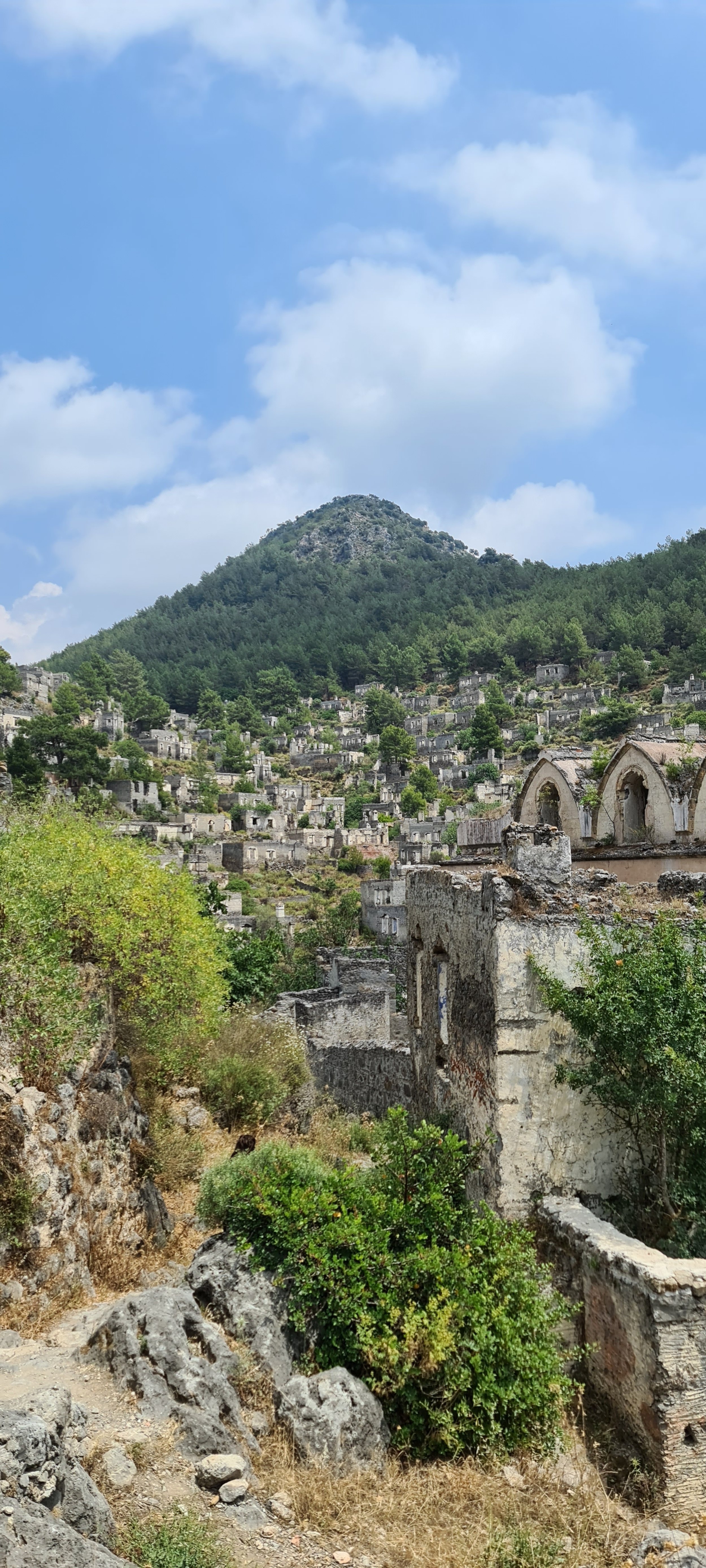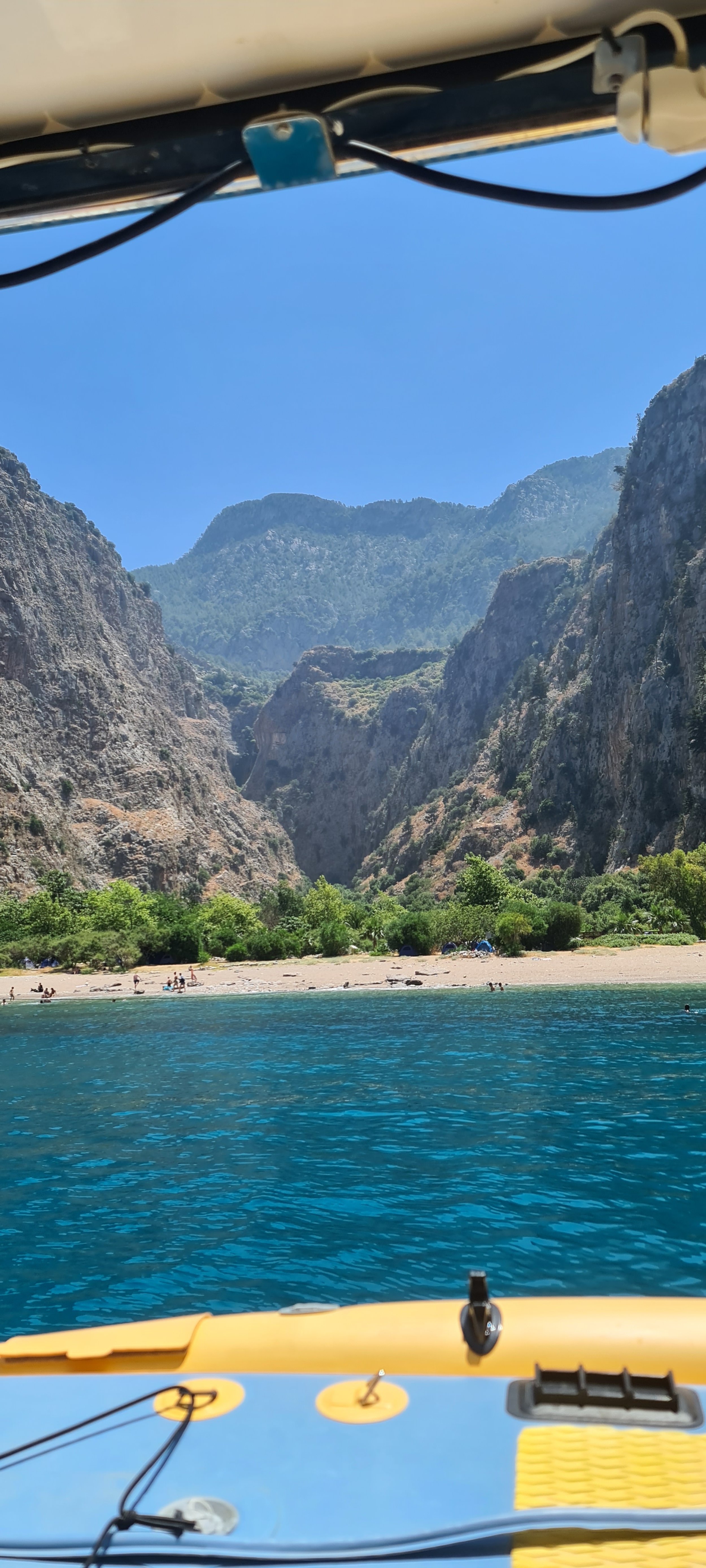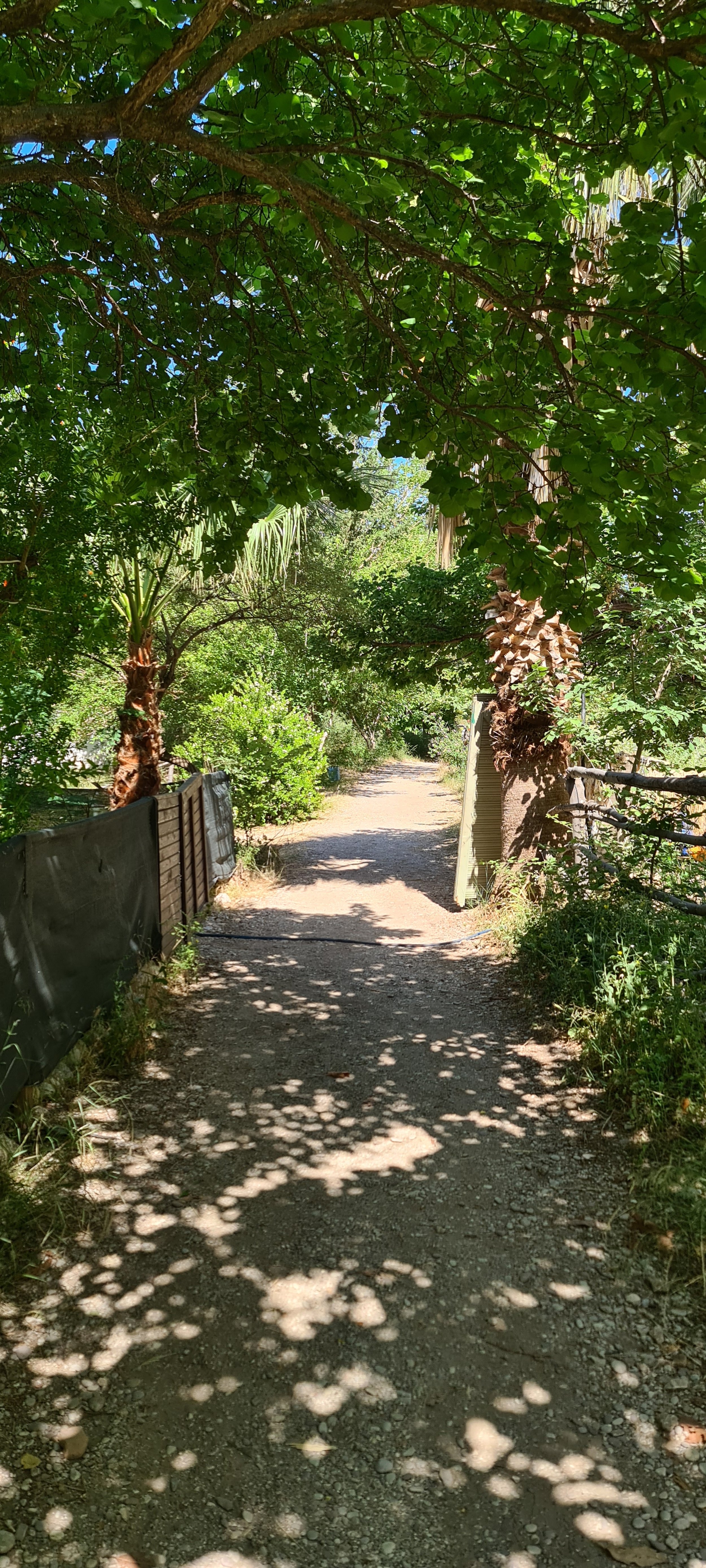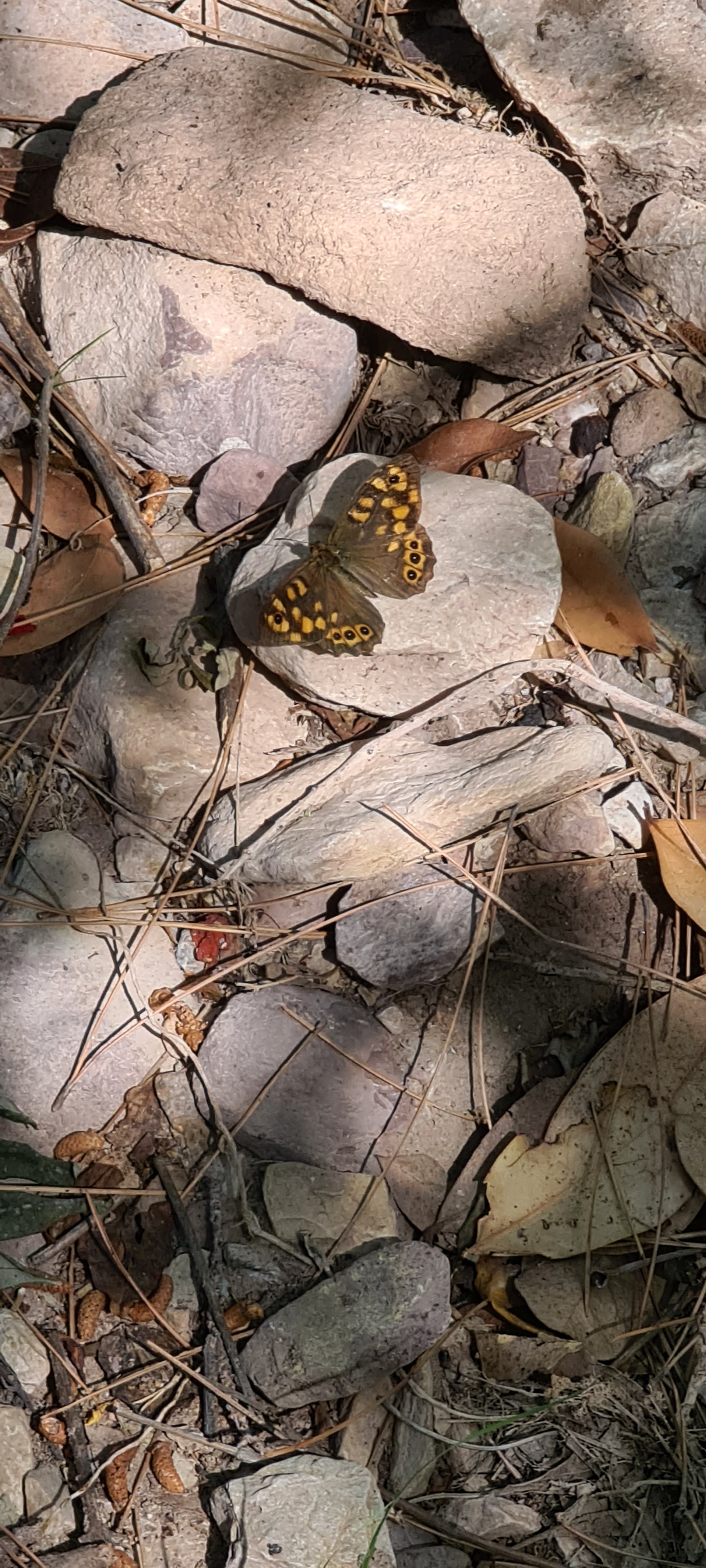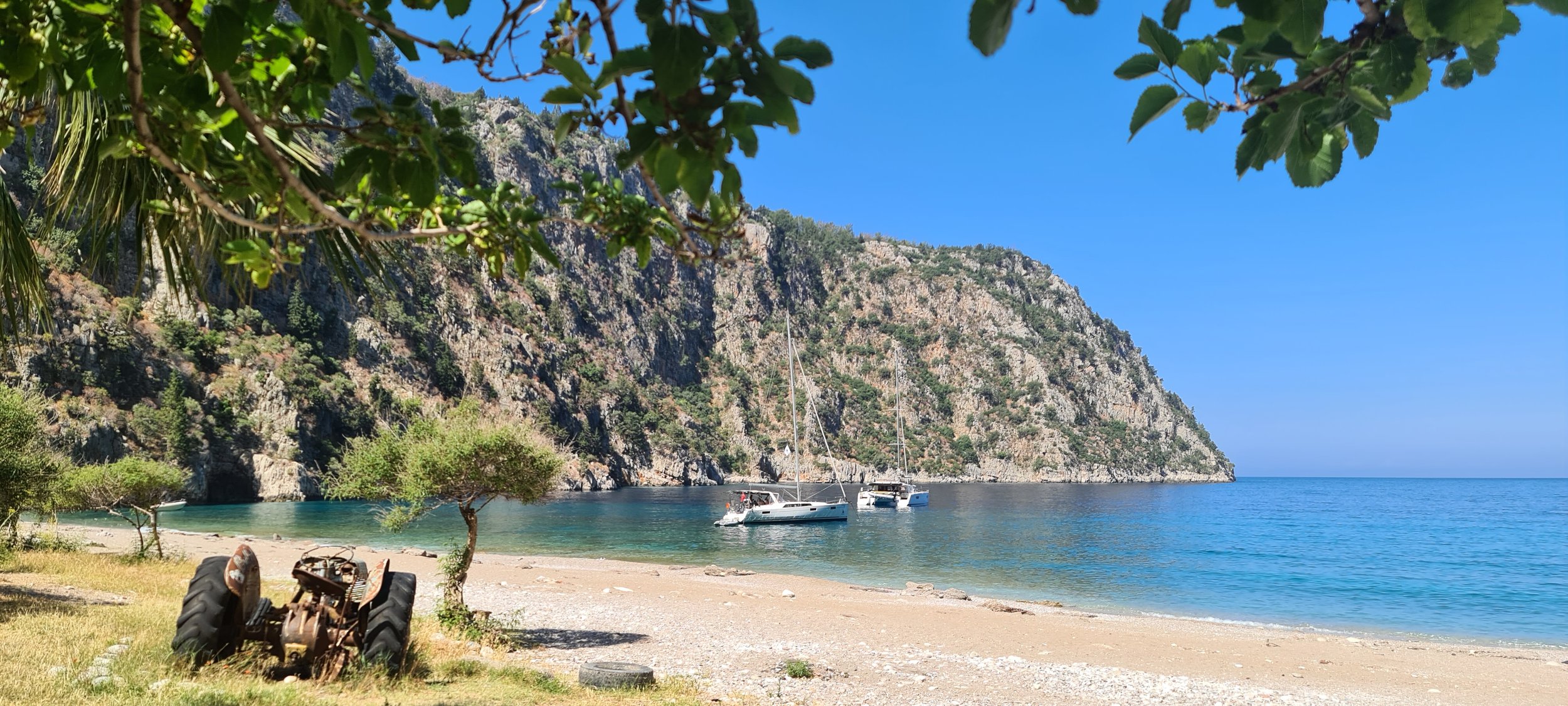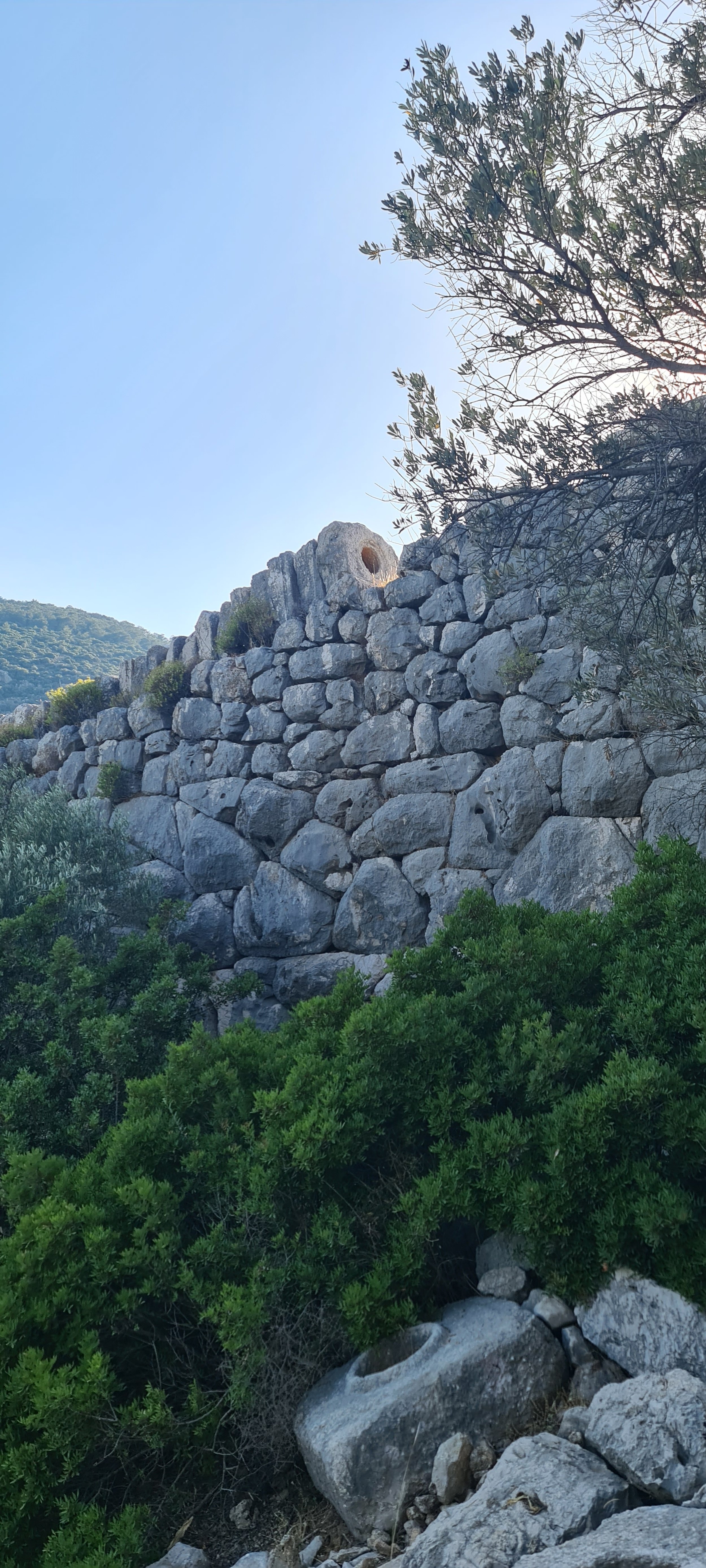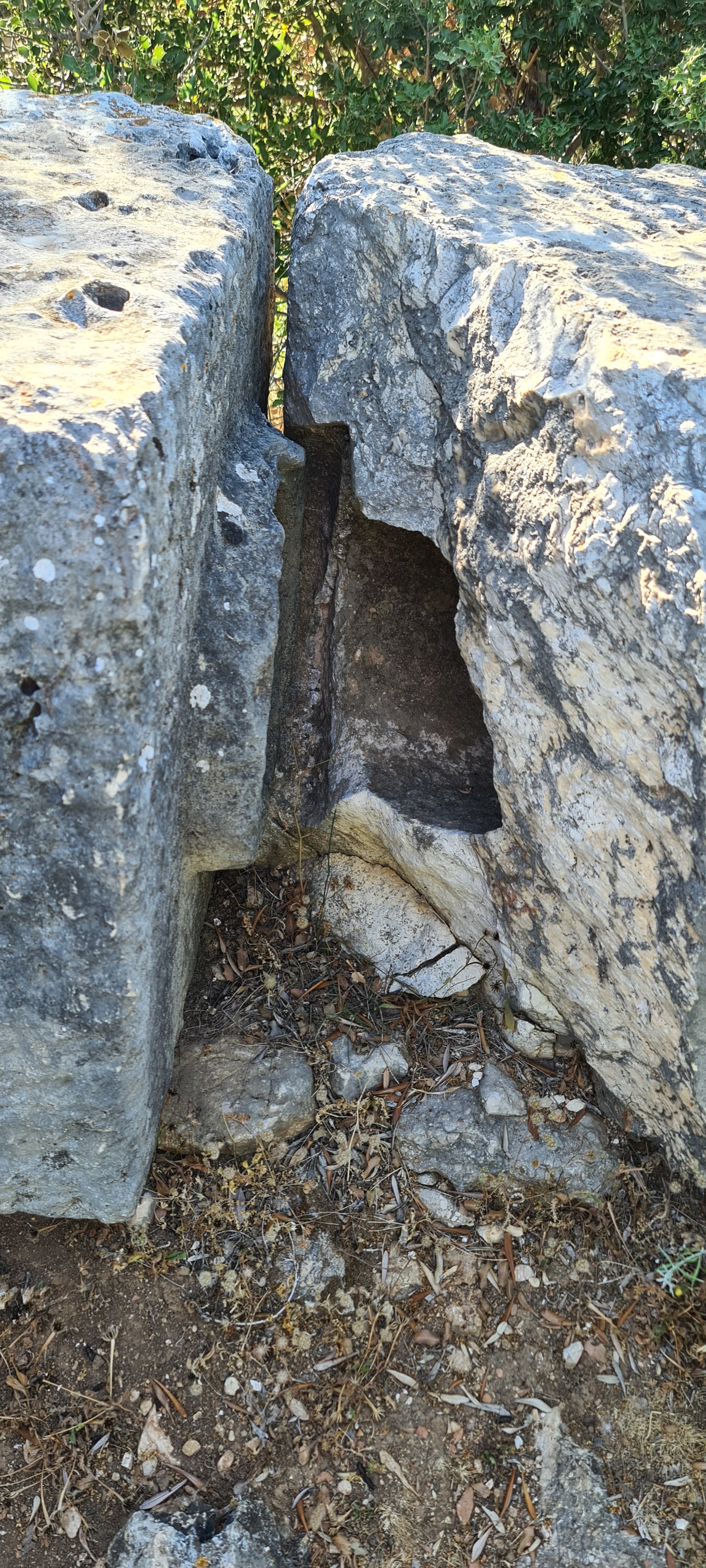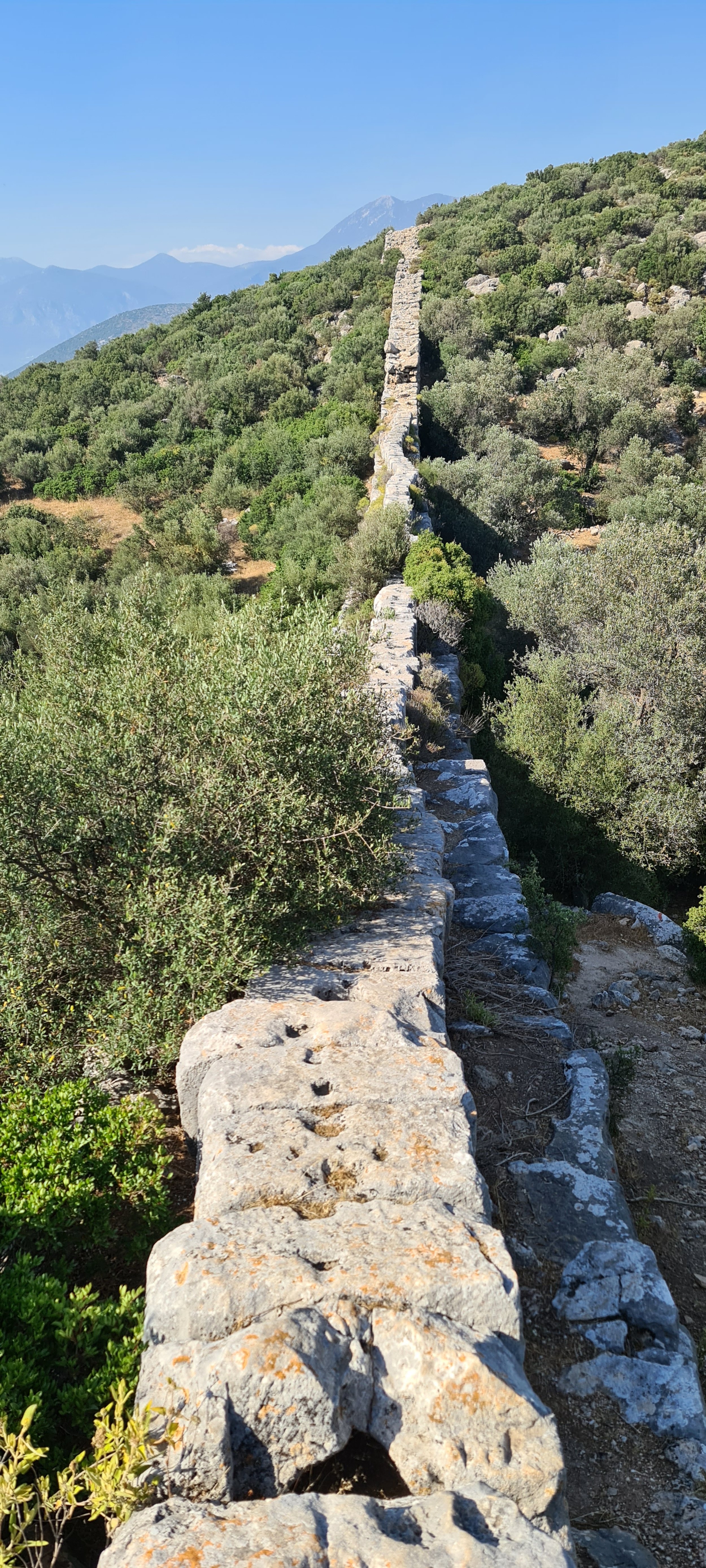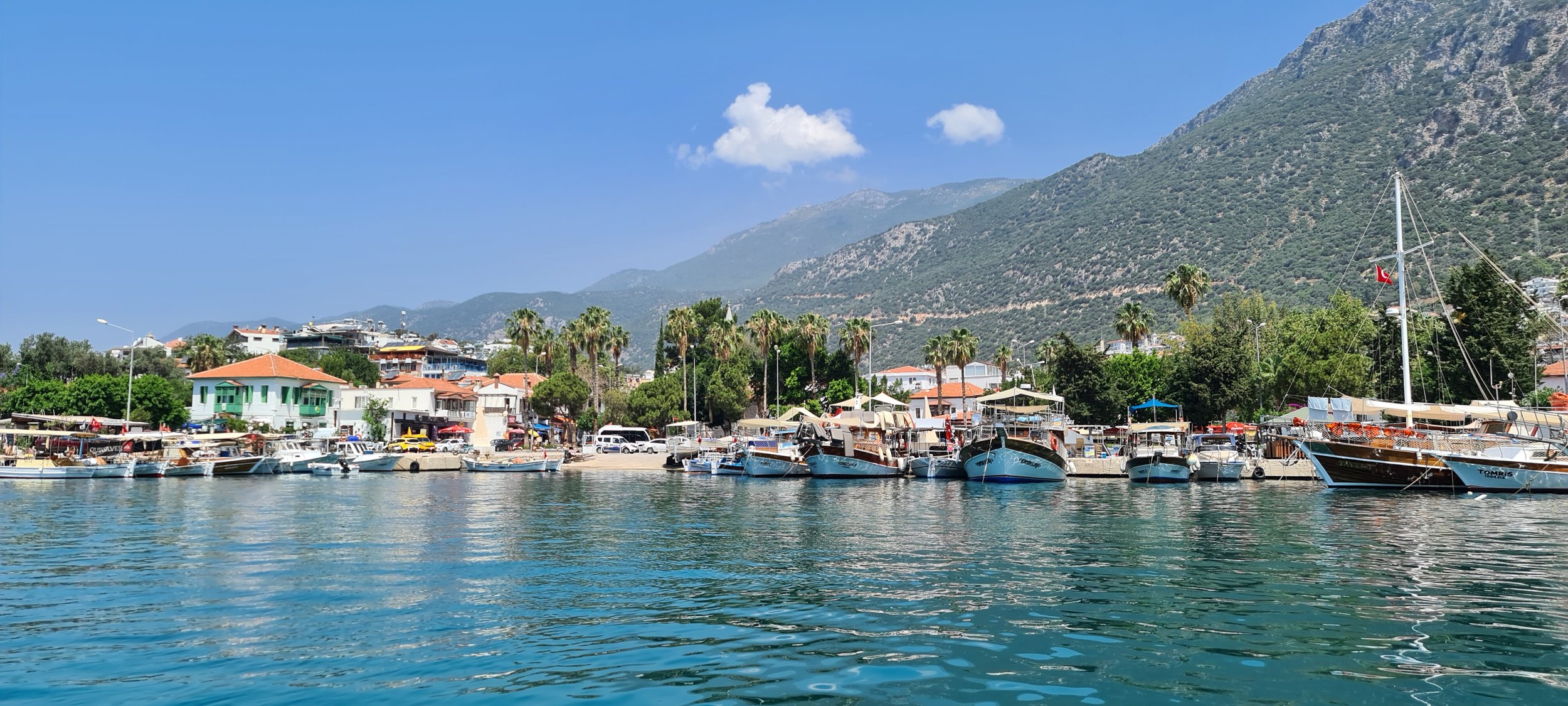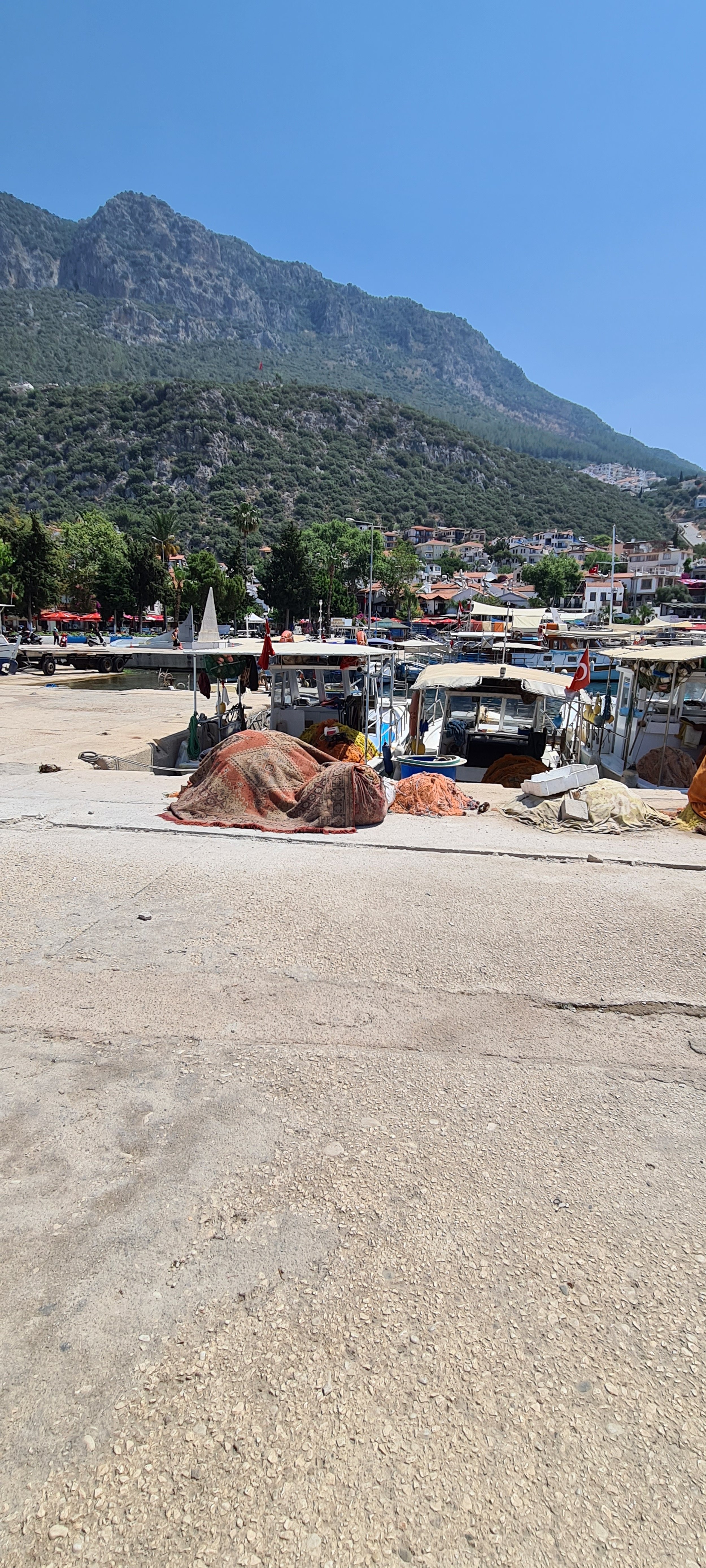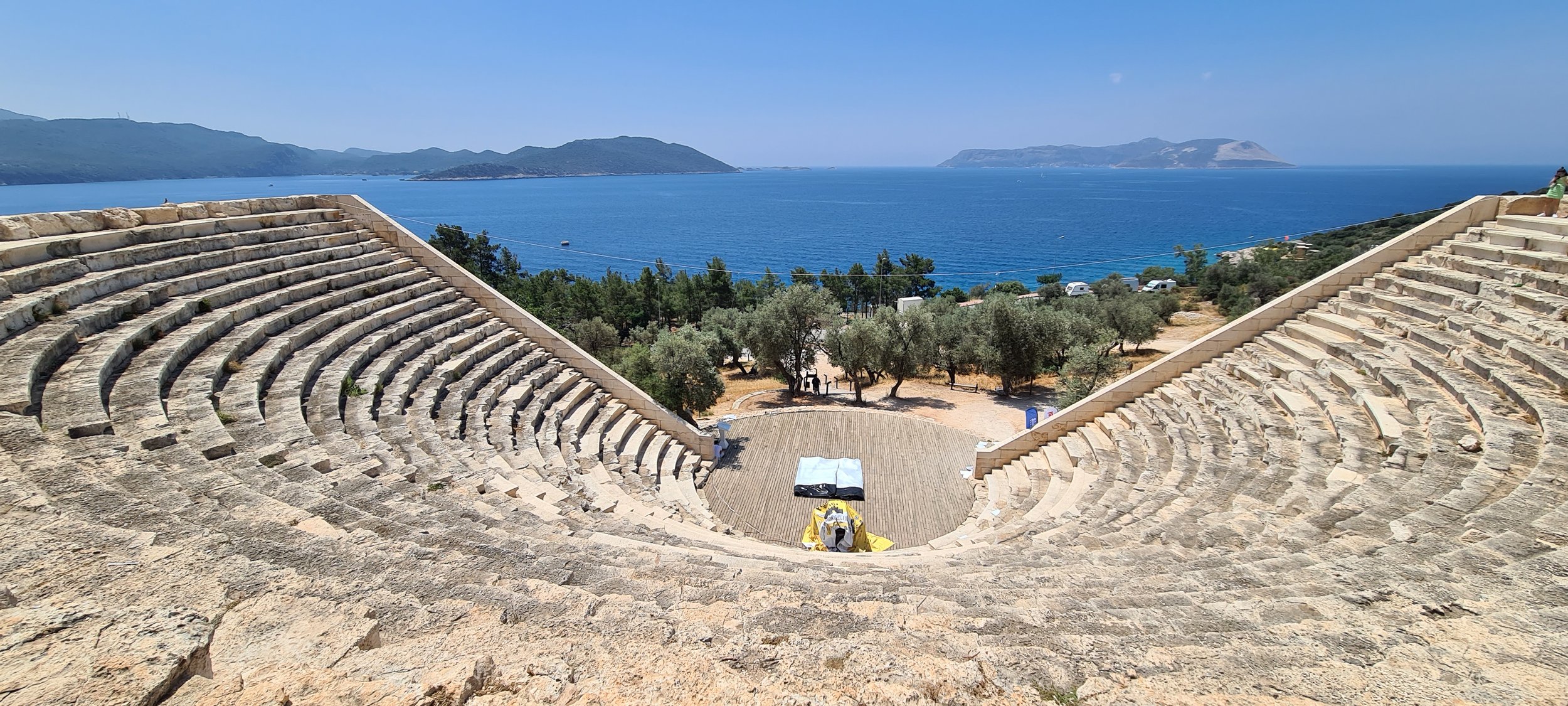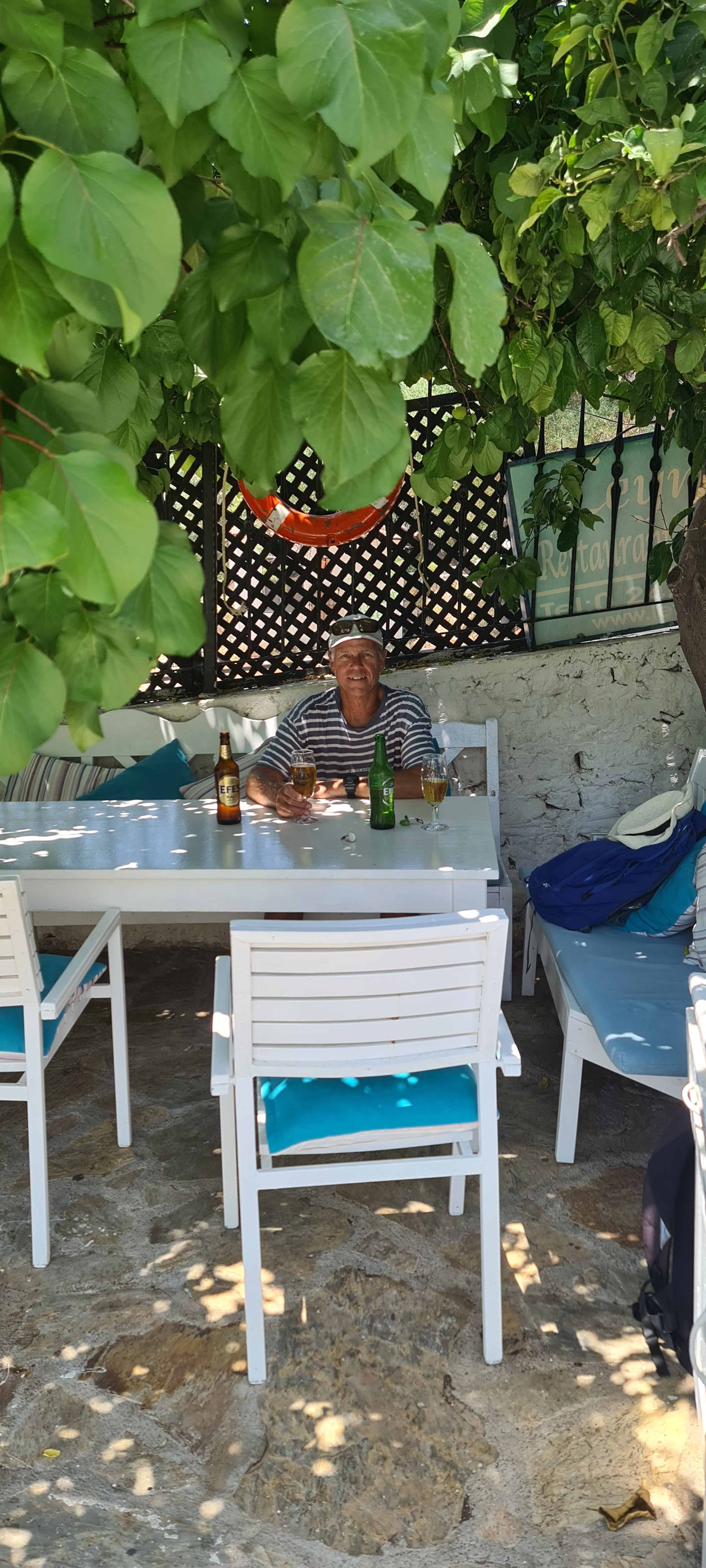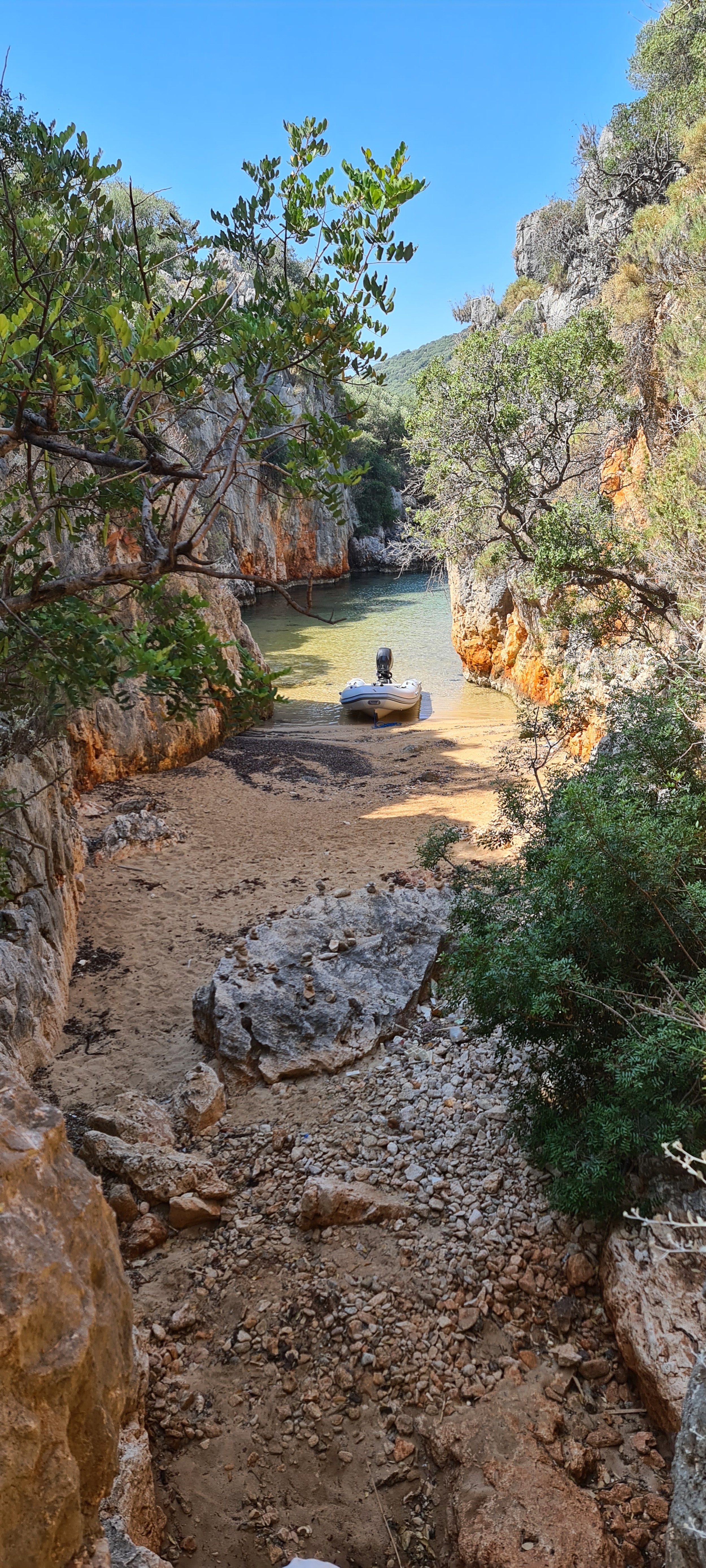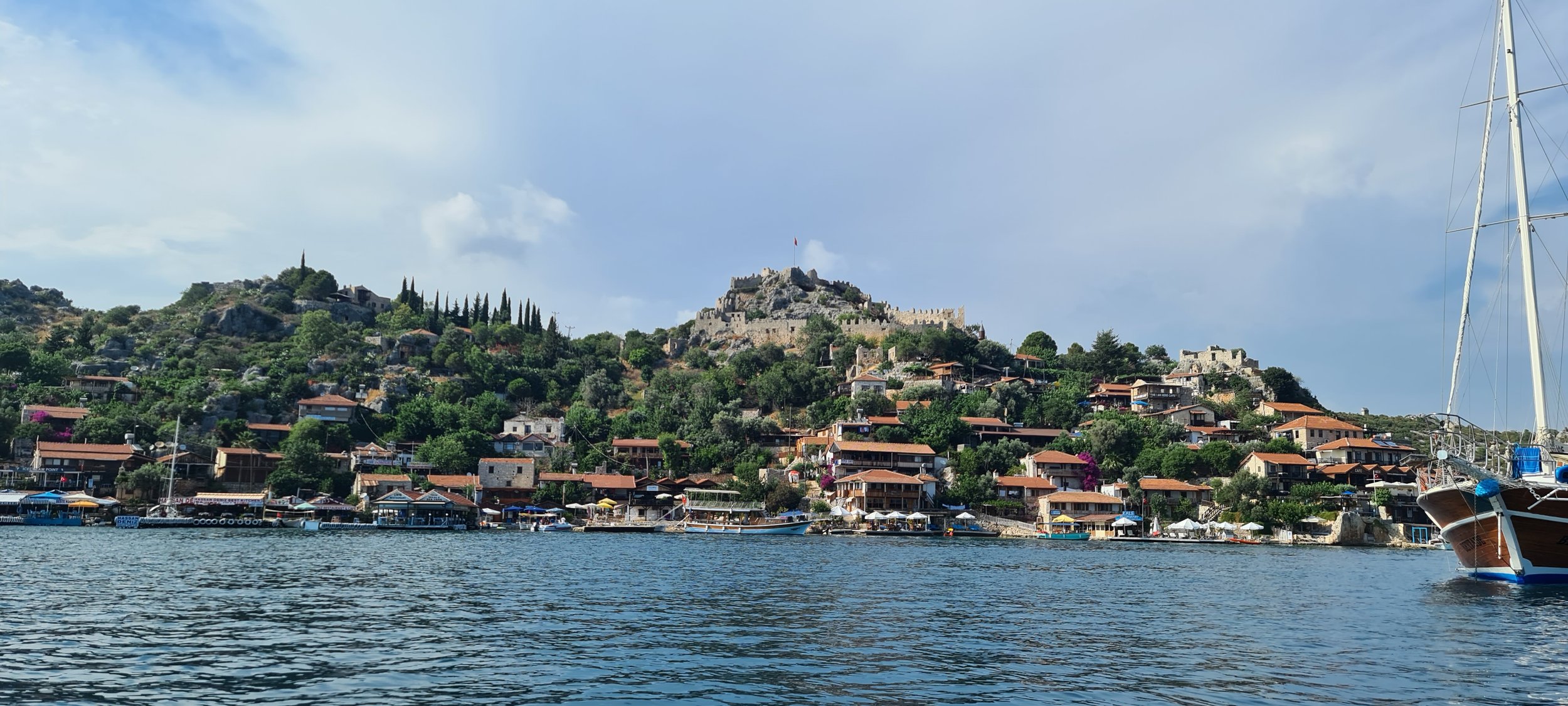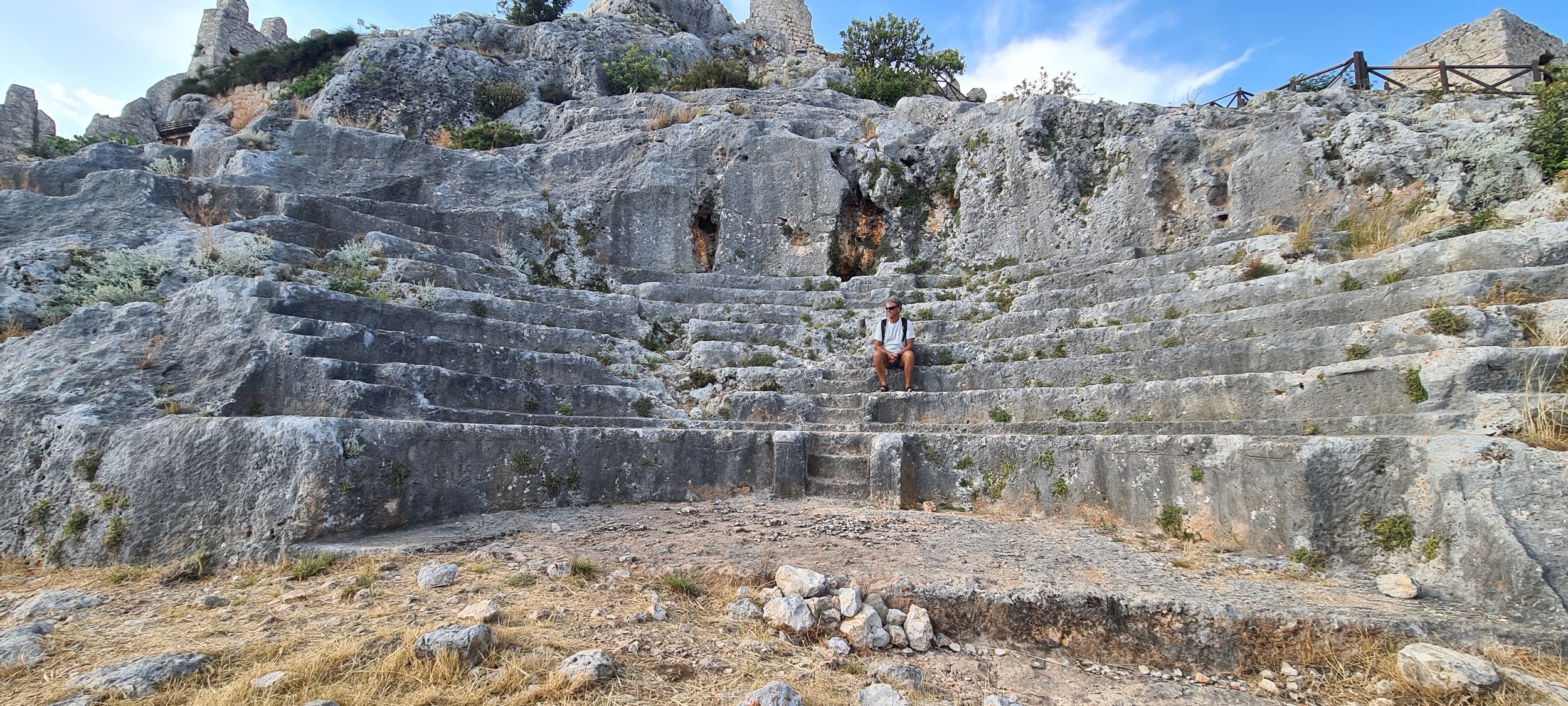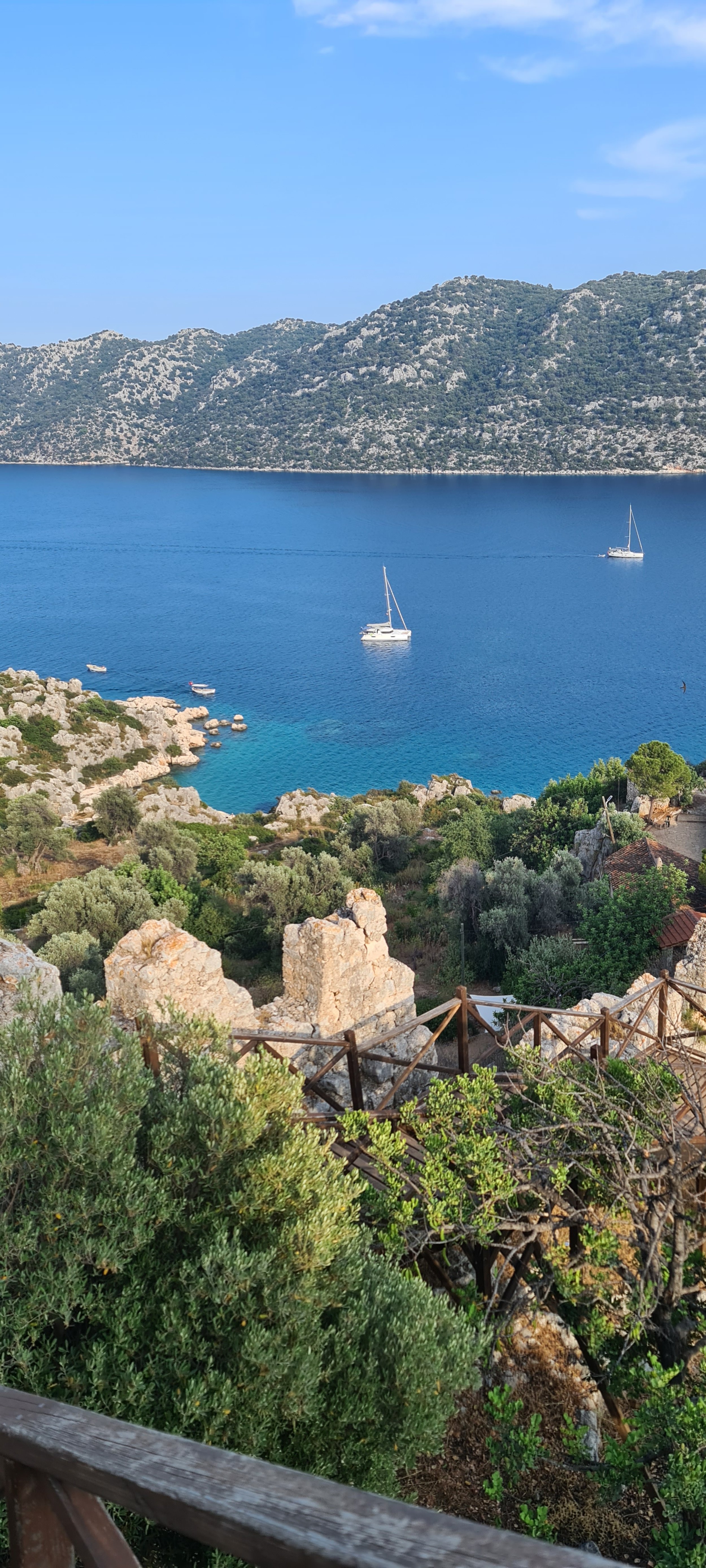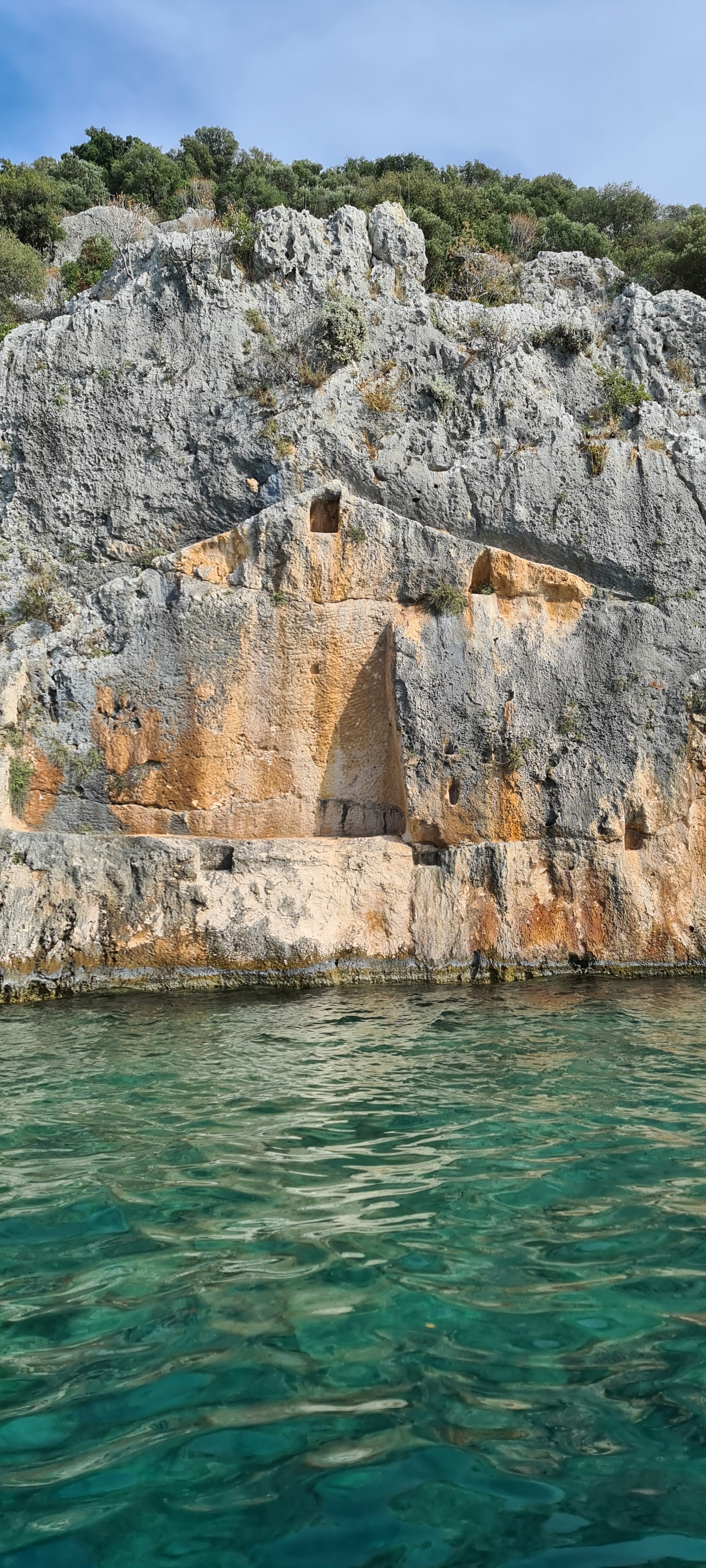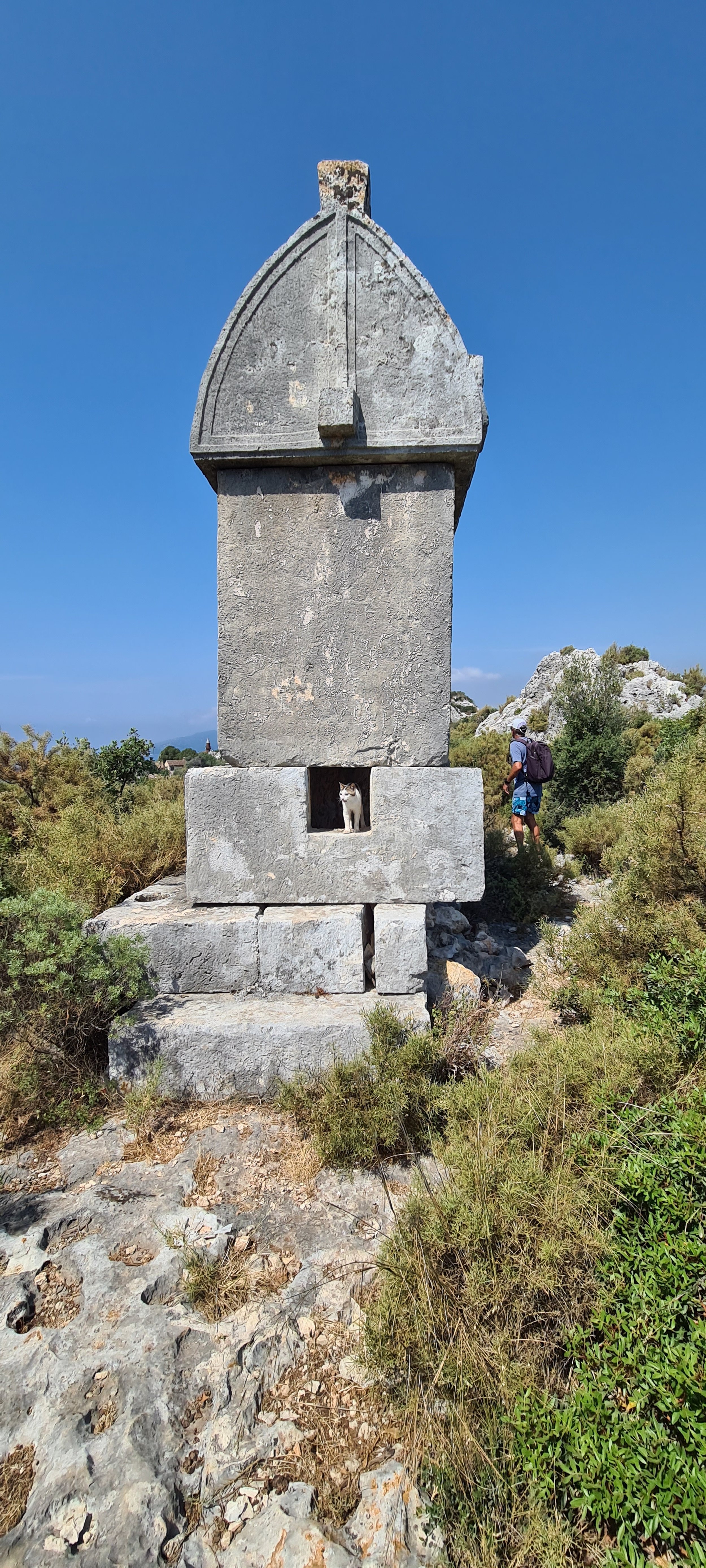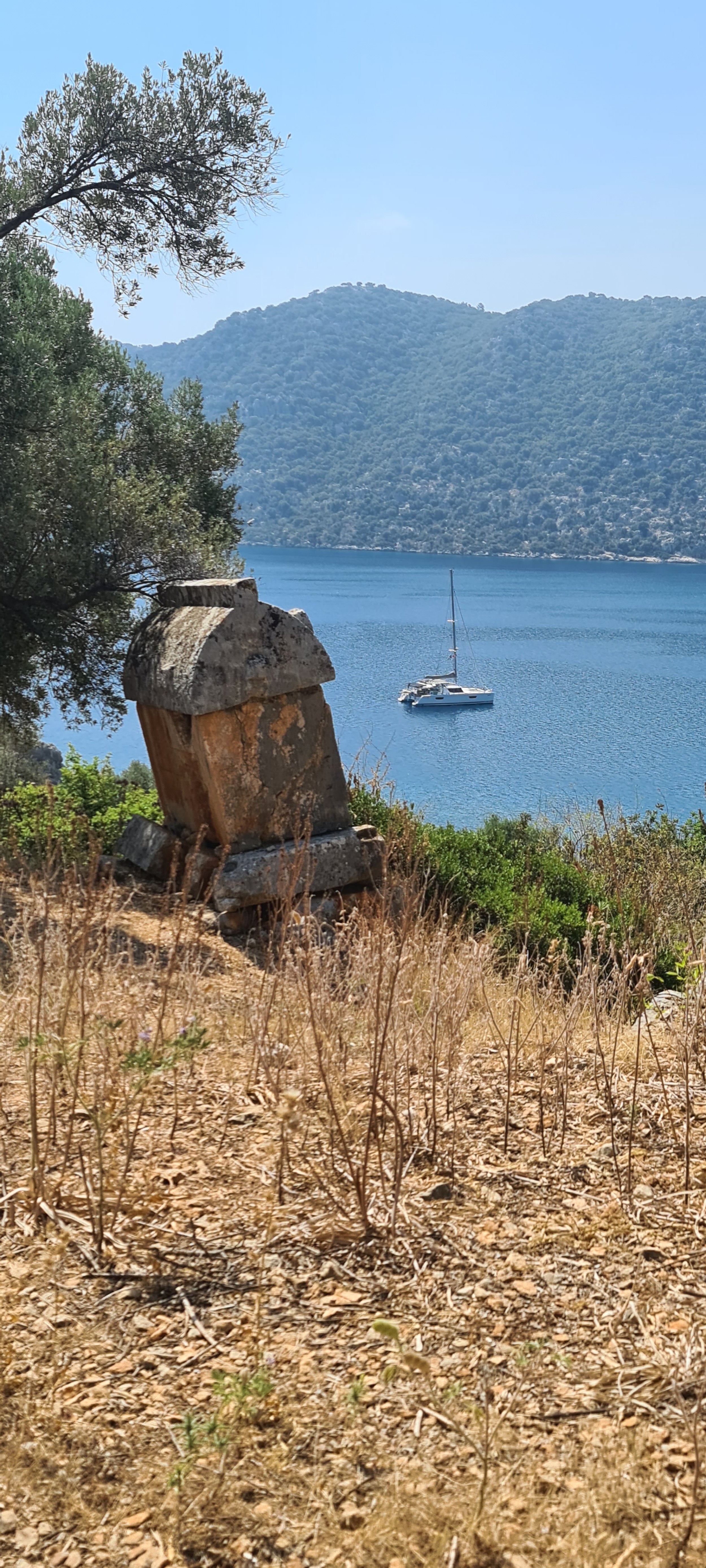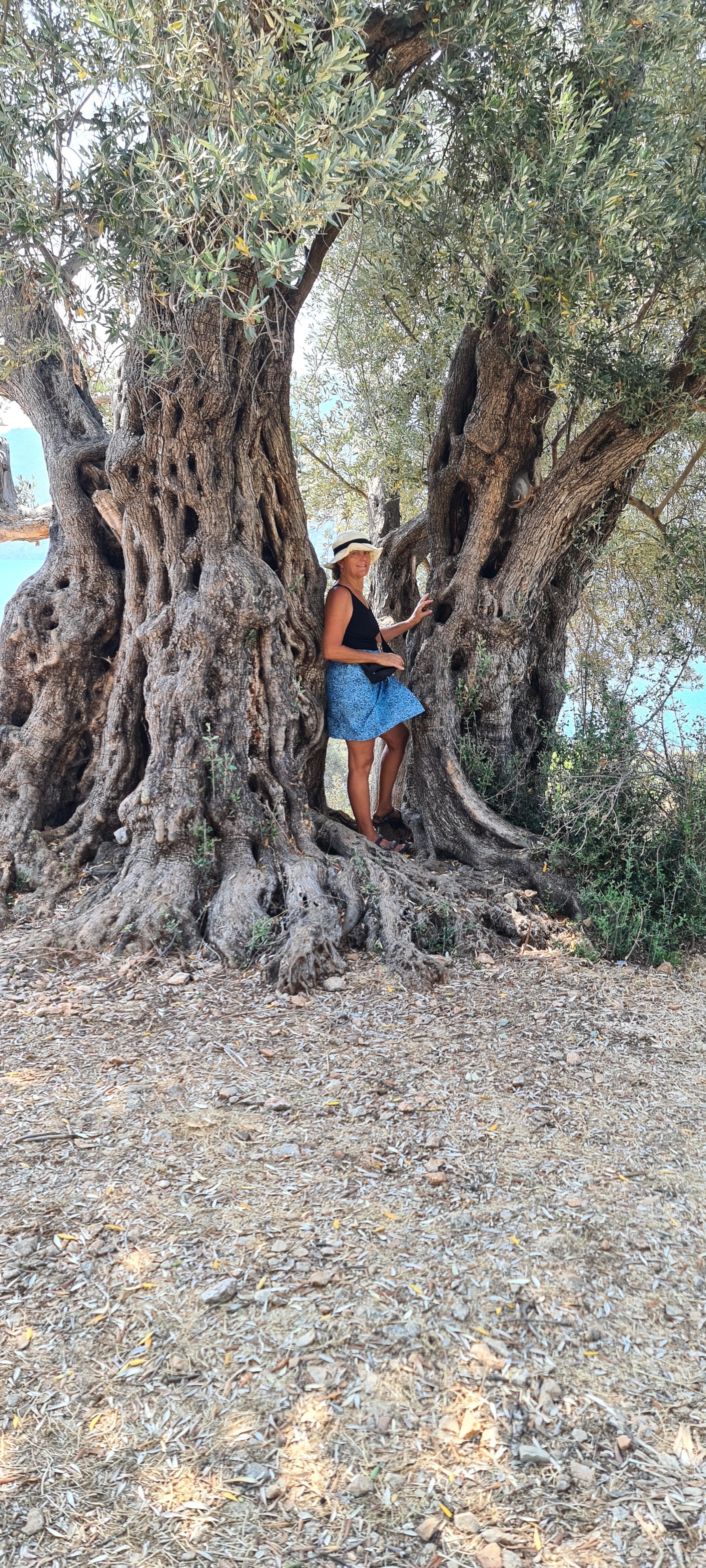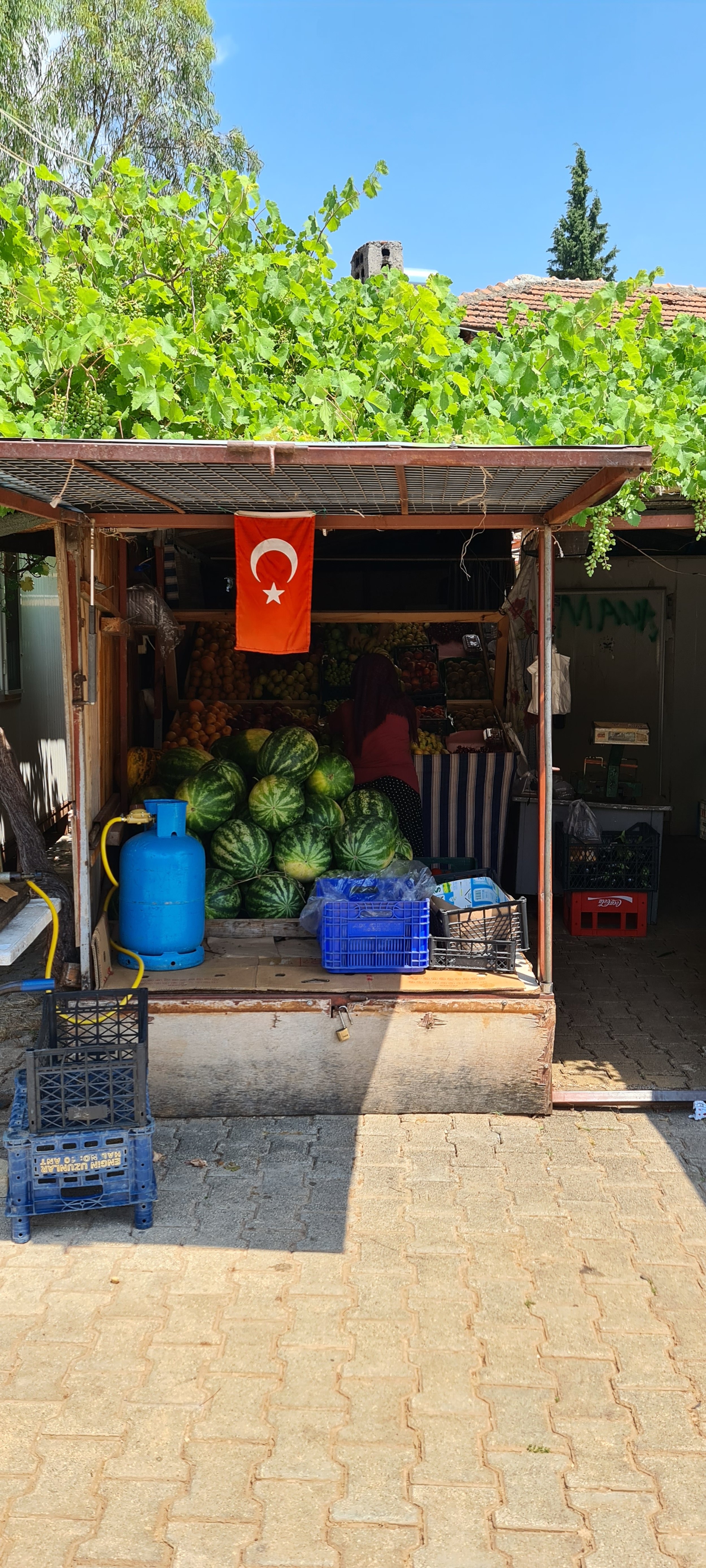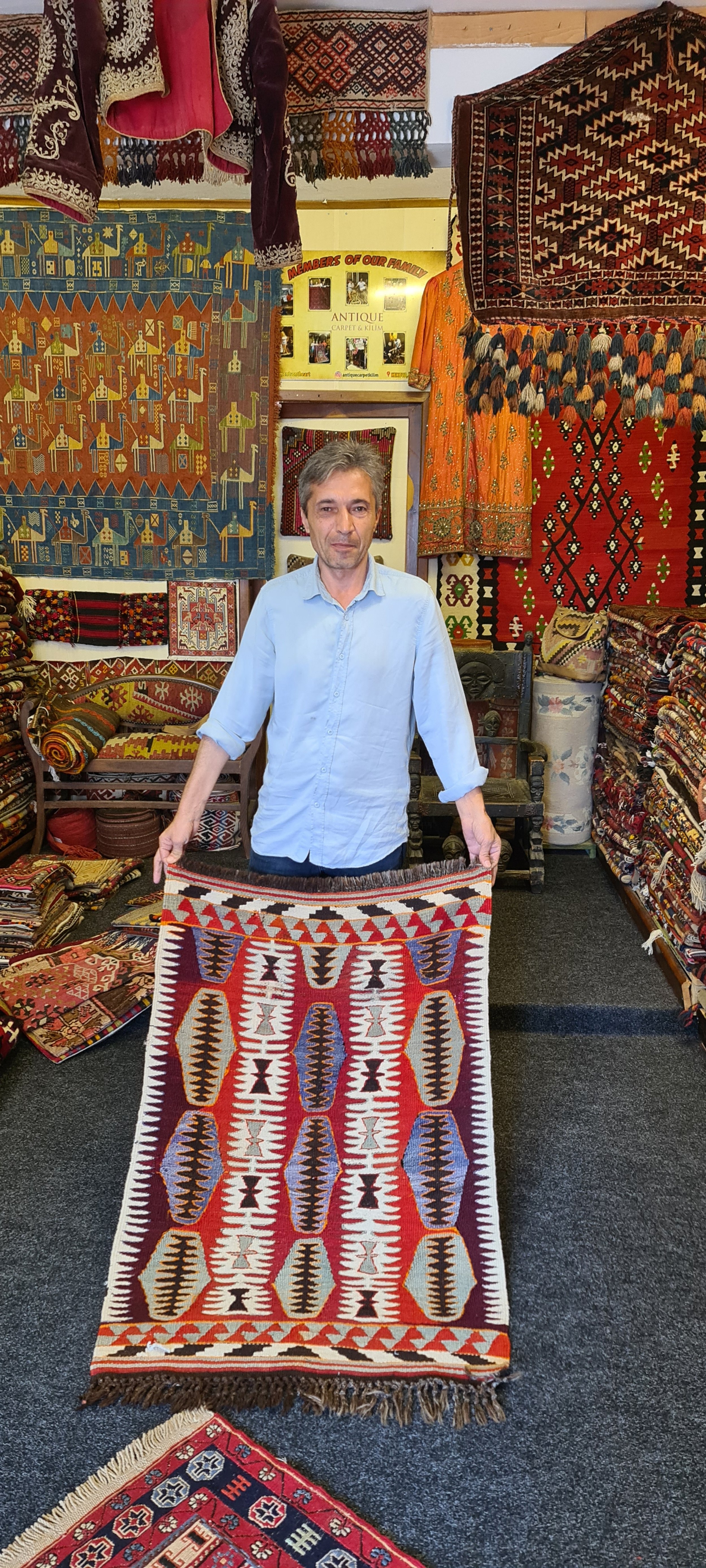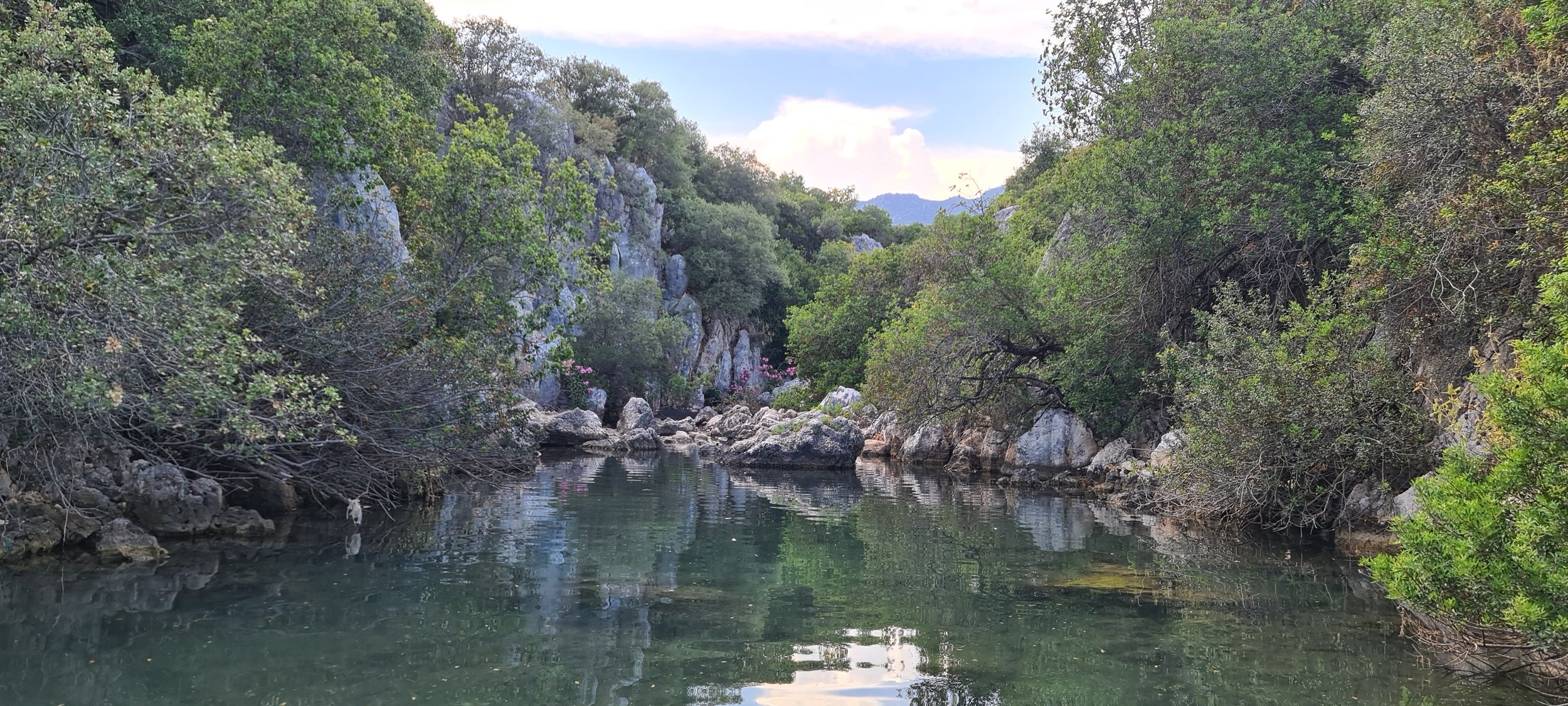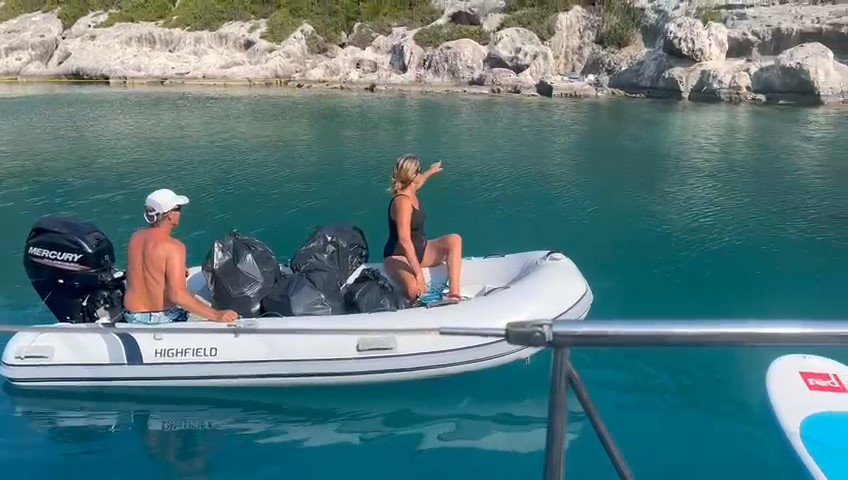Türkiye
Merhaba. Time is different on NOETA, the days seem to go quickly, we feel like we haven’t done much, but when we look back over a week we are amazed, at how much we have done, how far we have travelled and what we have experienced. Another dimension.
Türkiye. I found it hard to engage emotionally at first, my heart was still in Greece which, when I tallied up how long we have spent in Greece over the past three years, is 353 days! But, little by little, Türkiye has crept in. The language is harder. The tomatoes don’t seem to be as flavoursome and the local wine isn’t great. But it is so green, the salads are fresher and more varied, the lamb chops are delicious, small, and tender, and there are apricot trees everywhere. And the local beer Efes is particularly thirst quenching at ₺60. It’s been easy converting Turkish lira ₺ to NZD, roughly one tenth, so a beer $6.
Needing to be in the Canaries by November, we gave ourselves two months in Türkiye, starting at Didim and working our way down the “Turkish Riviera” as far as Kekova Roads. With the help of a recommended agent, Attila, we completed all the necessary check-in requirements at Didim marina, got our data sorted at Turkcell and signed up for our mandatory blue card “mavi kart.” In an attempt to reduce the amount of wastewater being discharged into the sea, the Turkish government implemented the mavi kart system whereby tanks are to be emptied regularly at a pump out station, usually located in a marina. It’s a commendable scheme but we have yet to see a gulet being pumped out (there are hundreds of these beautiful local boats ferrying tourists from idyllic spot to idyllic spot). A cruising tax in disguise? Many pump outs later, we realise that it is an art rather than a science, actual volume is irrelevant and so long as you do it within two weeks, everyone is happy.
The Turkish Riviera – made up of the northern Ionian, Carian, and southern Lycian coasts. The Carians and the Lycians were the early colonisers of these regions of Türkiye and over thousands of years have been Persianised, Hellenised, Romanised, Byzantiumised and finally Ottomanised to be the people they are today. And what lovely people they are – kind, helpful, hardworking, and competent. The country we have seen is clean, modern and appears to really care about the environment. For example, the whole Patara beachfront, all 18 kilometres of it, is completely fenced off to protect the nesting Caretta caretta turtles.
Like most European countries we have visited, historical ruins in Türkiye are a jumble of successive cultures, building on top of each other and more often than not, using previous building materials. Enthusiastic 19th century exploring “archaeologists” adding to the confusion with their recreations and misappropriation. Although there is plenty of this in Türkiye, there are also many sites that are discovered but have never been investigated, so as you walk through fields of pottery sherds amidst tumbledown hand cut stone buildings, you do feel like you are walking through untouched history.
So green, but then very few goats. Minarets towering above towns, call to prayer sometimes five times a day (starting at around 0430) but it is a changing culture, talking to a Turkish friend, very few people pray this much, if at all, and during Ramadan cafes are open! Bikinis and the tesettür style (headscarf and long, light overcoat) sit side by side at the beach.
Religion. In Greece there are little churches everywhere and often in the most obscure hard to get places; you get the feeling that a relationship with God is a very personal and solitary thing. Contrast this with mosques and minarets, which always are located right in the midst of things, it feels like a very shared God worship.
Last general comment is tying back. Yes there are some bays where it is impossible not to, obviously when you are competing for space with other boats, and it seems for some people, it’s just because that’s they do. We prefer not to, we like to face the wind, to have good ventilation through NOETA and in most places there is enough room to anchor and swing.
Memorable Experiences
Bloody hell, after a month I thought I didn’t have enough to say, after two months - there are so many people, places and adventures competing for space in my mind.
Our two months included several meetings with Royal Marine Upholstery in Didim to get all our 45 cushions redone, new sunshades and a tender cover, so we headed as far south as we thought we could allow, and slowly worked our way back up and into the two main gulfs (körfezi). It would have been great to spend longer and go further south and east, but it is what it is.
So, from north to south down the Turkish Riviera, our memorable places and things are -
Working with Mr Ibrahim (ex physics professor), Sinan (ex Phantom jet pilot) and the crew at Royal Marine Upholstery in Didim - they are professional artisans who went the extra mile and more. And from Didim we drove up to Ancient Ephesus; one of the first cities where Christianity began supplanting the old gods, it boasts a huge Greek amphitheatre that can seat 25,000 (and is still in use today), the magnificent Roman Celsius Library and before it was destroyed, the Temple of Artemis (once one of the Seven Wonders of the Ancient World). A local recommendation then took us up to the enchanting fruit wine village of Şirince, and back through nesting storks in Selçuk, roadside stalls in Akköy to the impressive Didyma Ionic Temple of Apollo. Our anchorages in Didim have all been close to the marina entrance, with easy access to services, relatively quiet, good holding, a great restaurant Key-f and free entertainment - a wedding in front of the brand new modern amphitheatre and a headland fire, luckily it was an offshore wind and the fire blew itself out over the sea.
Güllük Körfezi is a mixture of unspoilt greenness, extensive fish farming and hundreds of superyachts in Türkbükü, the St Tropez of Türkiye. The only recommendation we had been given was Paradise Bay, about an hour east located in Kazikli Limani - 500 biting flies in 38 degree heat with poor data was not paradise, but inside NOETA with closed doors and hatches and the aircon on, was - two bays north opposite a small holiday spot nestled in pine forest was better – still quiet, pretty, less flies and good data.
Bodrum, ancient Halicarnassus, the harbour dominated by the 15th century Crusader castle of St Peter. We had several days at anchor as we needed to get some Volvo assistance. Having visibility of our Volvo D2-75 engines data has always been a priority, we had Volvo Easy Connect installed several years ago in France but it never worked properly and when George in Leros came up with a Raymarine ECI-100 solution we were well pleased. Finally we had visibility of our engines and their excessive temperatures at 2200 RPM. It was crucially important to get this sorted, and with the help of Mono Yachting who introduced us and interpreted with Volvo Bodrum we had both our heat exchangers cleaned – 15 hours labour, an engine at a time. So whilst ferrying workmen back and forth we checked out the castle. Built using some material from the ruins of 300 BC King Mausolus's elaborate tomb (one of the Seven Wonders of the Ancient World) there are five towers each built by different Orders of the Knights of St John - French, Spanish, German, Italian and English each with their own distinctive style. It also houses an excellent Museum of Underwater Archaeology which gives great insight into historical sea trade from 14th century BC to 11th century AD.
Gökova Körfezi hadn’t been top of our list and we were pleasantly surprised with the greenness, clear water, and sheltered sandy anchorages. We wandered through the olive treed ruins of ancient Kedreai on Castle Island and looked from afar at Cleopatras fenced off fine golden sand beach and President Erdogan’s summer (palace) residence. The palace is located at the head of Değirmen Bükü “English Harbour” which the Brits used as a base in WW2 and often the whole bay is closed. When we first arrived the bay was closed, a warship on duty, coastguard boats on patrol and we were told it was because of fire risk. Understandable – there was a huge fire raging on the ridge above Marmaris threatening the virgin forest, and many helicopters bucketing water. But we were lucky, several days later it was open, the fire was under control, the President was in Ankara and we had the whole bay to ourselves, until the overnight gulets arrived. Further west lies the Seven Islands, another recommendation but, I wasn’t that enamoured, disappointing beach rubbish, muddy anchorages – the nesting gulls watching cries over their same-size children clumsily scrambling over rocks was the best part for me. Back up across we called into Çökertme, a little village with seafront and garden restaurants, backed by fire ravaged hills destroyed in August 2021. Lunch at Captain Ibrahims was a delicious kebap, fresh shepherd salad and chats with our young waiter Artur, who spoke good English (self-taught by watching TV and playing video games); he told us the fire was like being in hell, it lasted a week and only stopped when it rained.
Knidos is perched at the end of the Datça Peninsula, two little ancient harbours surrounded by fourth century BC Dorian ruins in fields of purple statice; it was a surprisingly large city (200 acres) for its time and where the first statue of a naked woman (Aphrodite) was sculptured. Quite a special place.
Dalyan River & Kanos – there are many large river deltas along the coast, all of them sites of once prosperous trading cities, but silt, earthquakes and time have pushed these inland and into ruin. One of the most impressive is Kanos. A hired ferry took us across from the bay where we had anchored and up the Dalyan river delta, beginning at the famed 4.5 km Iztuzu (Turtle) Beach, breeding ground for the Caretta caretta, then through narrow reed-lined channels and gated fish weirs to ancient fourth century BC Kaunos. We didn’t consider taking TENDER up there, although not strictly prohibited, it is discouraged - there is no clear channel - more of a braided maze. The view from the amphitheatre across the delta to the sea was beautiful, as was the once busting harbourside town, now slumbering in warm treed sunshine. From there onwards past crab fisherman, hungry turtles and fertile fields, horses grazing, to riverside town Dalyan. Lunch at a riverside restaurant looking across and up at the elaborately carved Lycian rock tombs of kings was another special moment.
Bozukkale (broken castle) is a deep and protected natural harbour, the entrance guarded by a third century BC hilltop fortress looking across to Rhodes. Once ancient Loryma, it became a strategic defence for Rhodes after defeating Demetrios who had used it as a main port and supply base; it is only 14 miles away. A clamber to the top and along the 300 m limestone ridge, we were accompanied all the way by a local guide (dog), so lovely to have canine company. And dinner at Ali Babas, one of the three restaurants in the bay was a delight, authentic and tasty, from its impossibly rickety jetty to its delicious shepherd salad.
Like Bozukkale, Lydae is another ancient site only accessible by sea or by walking miles through rough terrain. Anchoring in a lovely little eastern bay on the south side of Kapidağ we had good 15 minute tender access to Skopea Limani to explore busy, picturesque bays and catch up with Cloud Atlas. It was lovely to see Andrew on this side of the world, but also sad to miss Juliet. And from our anchorage a 25 minute walk up a pine forested path to the Lydae ruins - looking down from monumental first century AD Roman tombs onto a beautiful dry barren valley with domed cisterns still in use for stock and as bat caves, wild and silent.
Göcek is well worth a visit - superyacht heaven yet still a small tidy hamlet with a main street of upmarket, but not expensive, shops, and a good chandlery. We especially loved our anchorage here, only 15 minutes tender from town. It was a beautiful little forested un-named bay with a trip of goats, a flock of gulls and fresh turtle track marks and depressions on the beach all three days we were there. So close to Göcek but we had it all to ourselves, magic.
Anchoring in Fethiye had its moments, muddy, not great holding and unmarked no-go zones, well they were marked on the chart as anchorages and yet we were moved along by the coastguard, and just when we found a good holding! But, first evening looking across the harbour at the Lycian rock tombs, red gold in the setting sun.. worthwhile.. it’s a great town and easily accessible shopping for everyday items and special Turkish treats. The Old Town is a delight with its fish and spice markets, colourful rugs and kilims, it is a wonderful sensory experience, and catching up with Tigger for dinner - Meğri courtyard under huge tree canopy in the Old Town, delicious meze, entertainment watching testi kebab being smashed open (served) – was fun. But back to the D2-75s, I’m sure an update is what you have been waiting for. Everything was working well, both engines cruising at 85° then 90° at full throttle, until they weren’t, well the starboard one anyway. But Erhan and his Volvo team came on board, three men, two hours and one sea trial later, we were back in business.
Before leaving Fethiye we were keen to visit Kayaköy, an abandoned town, a casualty of the persecutions, massacres and exiles of Greeks and other Christian minorities in the Ottoman Empire during World War I, the Greco-Turkish War and the Treaty of Lausanne in 1923. Once a thriving population of 6,500 it slowly fell into disuse and was never resettled; the Turks and Muslims being repatriated from Greece did not wish to settle due to rumours of ghosts; it was equally as hard for them.
Butterfly Valley (Kelebekler Vadasi) is so named for the considerable number of species of butterfly found here between June - Sept, I saw one. The beach and valley behind have a very laid back hippy feel to it, which gets ruined briefly during the day with many "pirate" gulets and other day-tripping boats, luckily they all leave at the end of the day and we had the whole bay to ourselves. It’s a one km walk from the beach to the waterfall at the head of the valley, an easy shady path past vegetable gardens and apricot trees, lined with pomegranate and bay trees.
Kalkan provided us with a rocky 20 minute hike up to the Delikkemer inverted siphon of Patara aqueduct line. What you say! Built in 48-49 AD, the aqueduct was destroyed during an earthquake in 68 AD and restored shortly after that. Spring fed, it ran 23 km across and down to Patara, an important Roman port city (now silted up) crossing a 200 m valley on the way. And the clever Romans built an inverted siphon consisting of a closed pipe under pressure through a row of hollowed limestone blocks placed on a 18 m wall. Amazing engineering.
Kas is another delightful little village, complete with mosque, minaret, Hellenistic amphitheatre, Lycian rock tombs and stone sarcophagi. A morning tender to the waterfront by the fishing boats and a short walk up past a temple to the amphitheatre saw us looking across to Kastellorizo, Greece before enjoying a lovely lunch at Leymona Plaj Restoran Bar under the shade of apricot and lemon trees.
Kekova Roads is an amazing area, beautiful little bays set in an ancient landscape with freshwater springs, buildings cut out of rock on the edge of sunken cities, castles, rock tombs and stone sarcophagi. We saw a huge bat cave, pigs, goats, cuttlefish, owls, squirrels, and black raptors, but no signs of any archaeological exploration, only tomb robbers. We anchored between Kaleköy (castle's village) and Kekova Island, below a Byzantine castle and ridge of Lycian tombs, and tendered around the area covering a lot of ground in several days - 20 nautical miles, we do love our TENDER. Kaleüçağız is a cute little town with limited provisioning but helpful locals (gregarious Hassan) and great rug shop (knowledgeable Cetin). A heads up from Cath and Rick on Intention saw us heading around to the south coast of Kekova and a stunning little seahorse shaped bay on the last night, you could see how it could get crowded but it wasn’t. Our only disappointment was the onshore rubbish – two hours and six rubbish bags later… we have been inspired by Lady Roslyn’’s Trash Tuesday initiative; it doesn’t have to be a Tuesday to pay it forward. And then what a lovely night sharing a meal and stories on NOETA listening to the silence and the occasional owl cry. That was where we saw the cuttlefish, who came to our new underwater lights. It felt sad to leave this place and the Kekova Roads, it really is a truly magical place, but we needed to head north and be back in Didim, NOETA indeed!
So, nearly 8 weeks in Türkiye, it was time to go - Eid al-Adha had started, the Turks were on holiday and we needed to head west, back to Leros with our new fancy cushions, to catch up with friends, and pick up our first crew, brother Chris. The journey continues…




